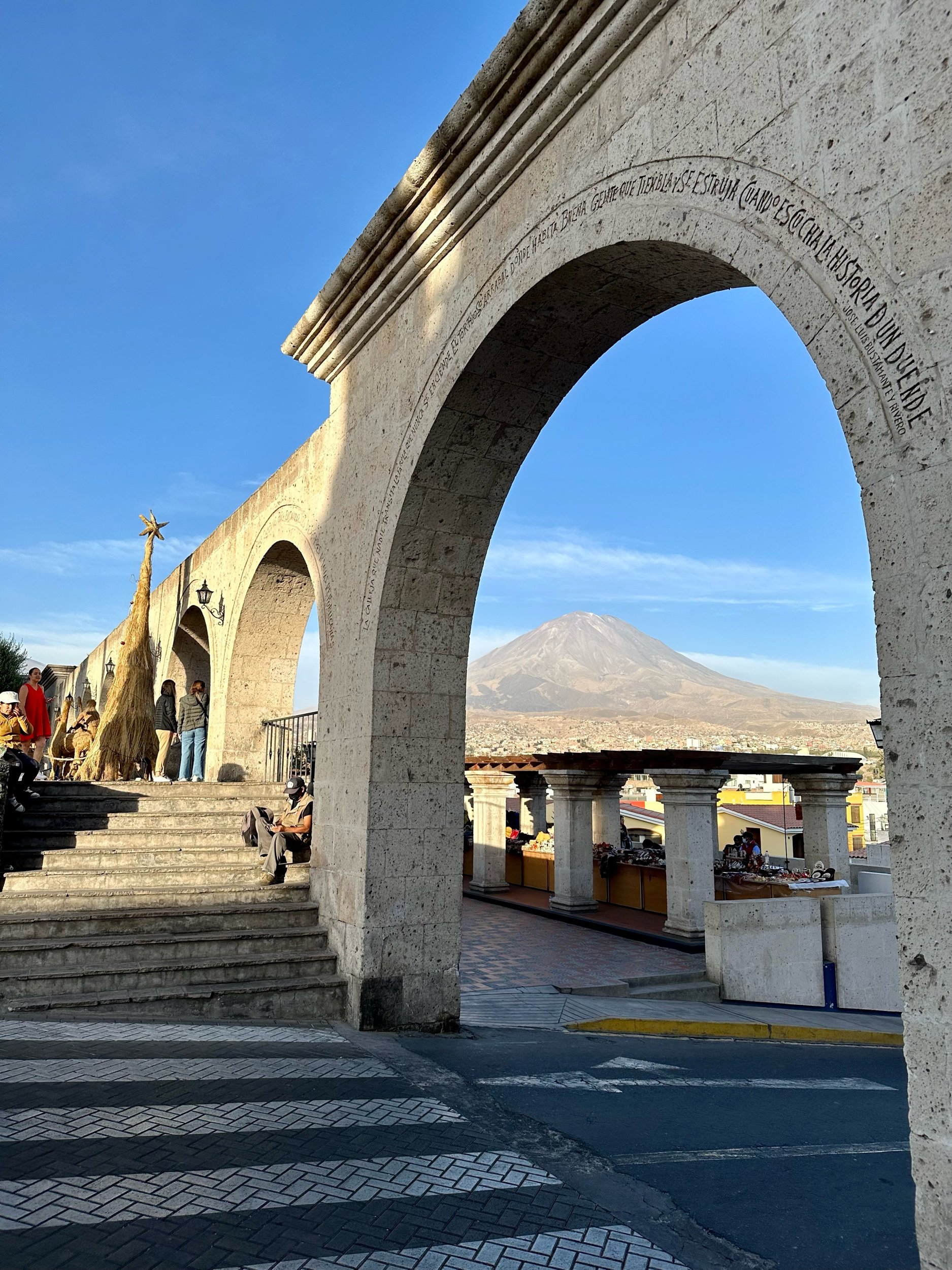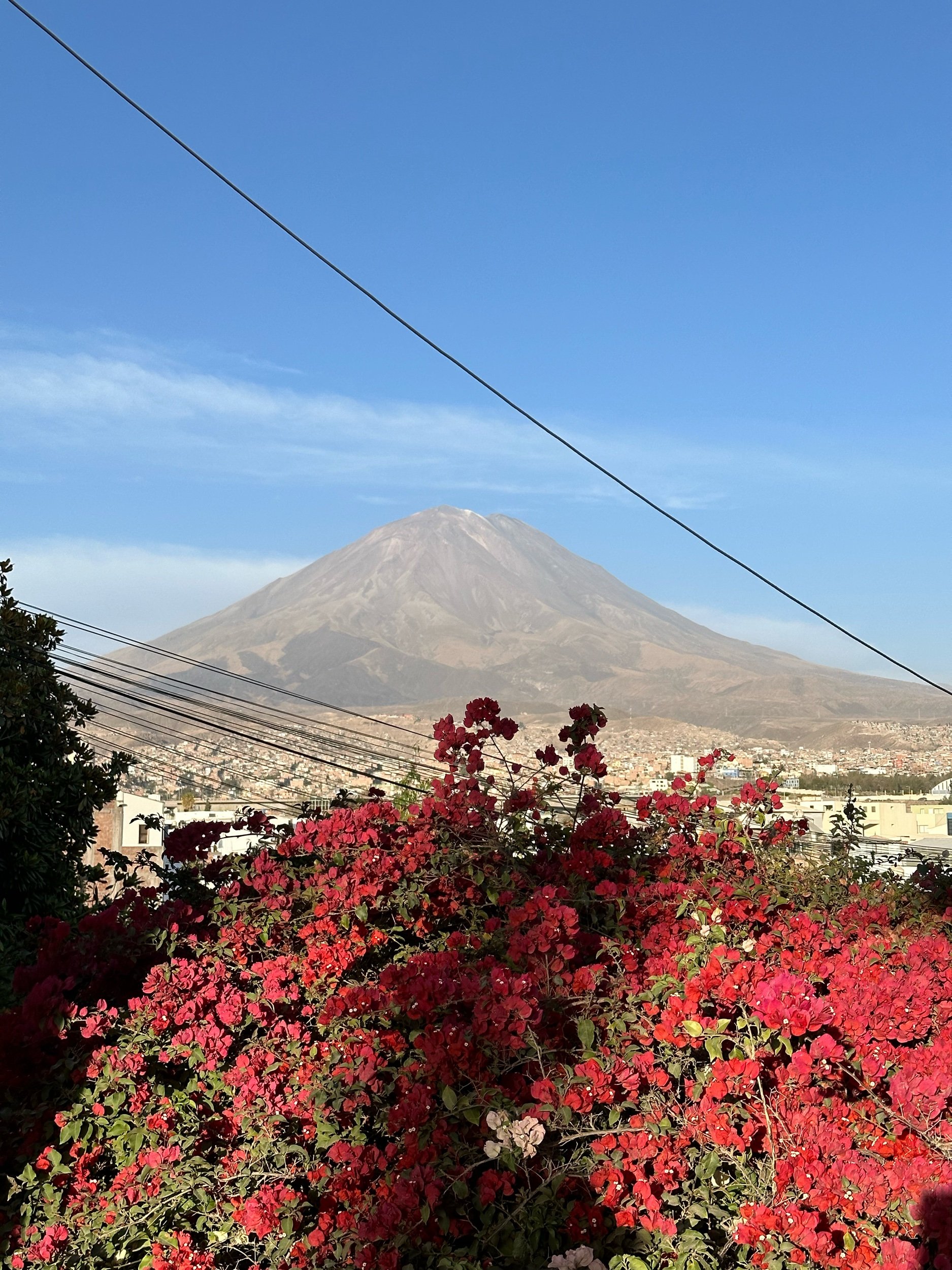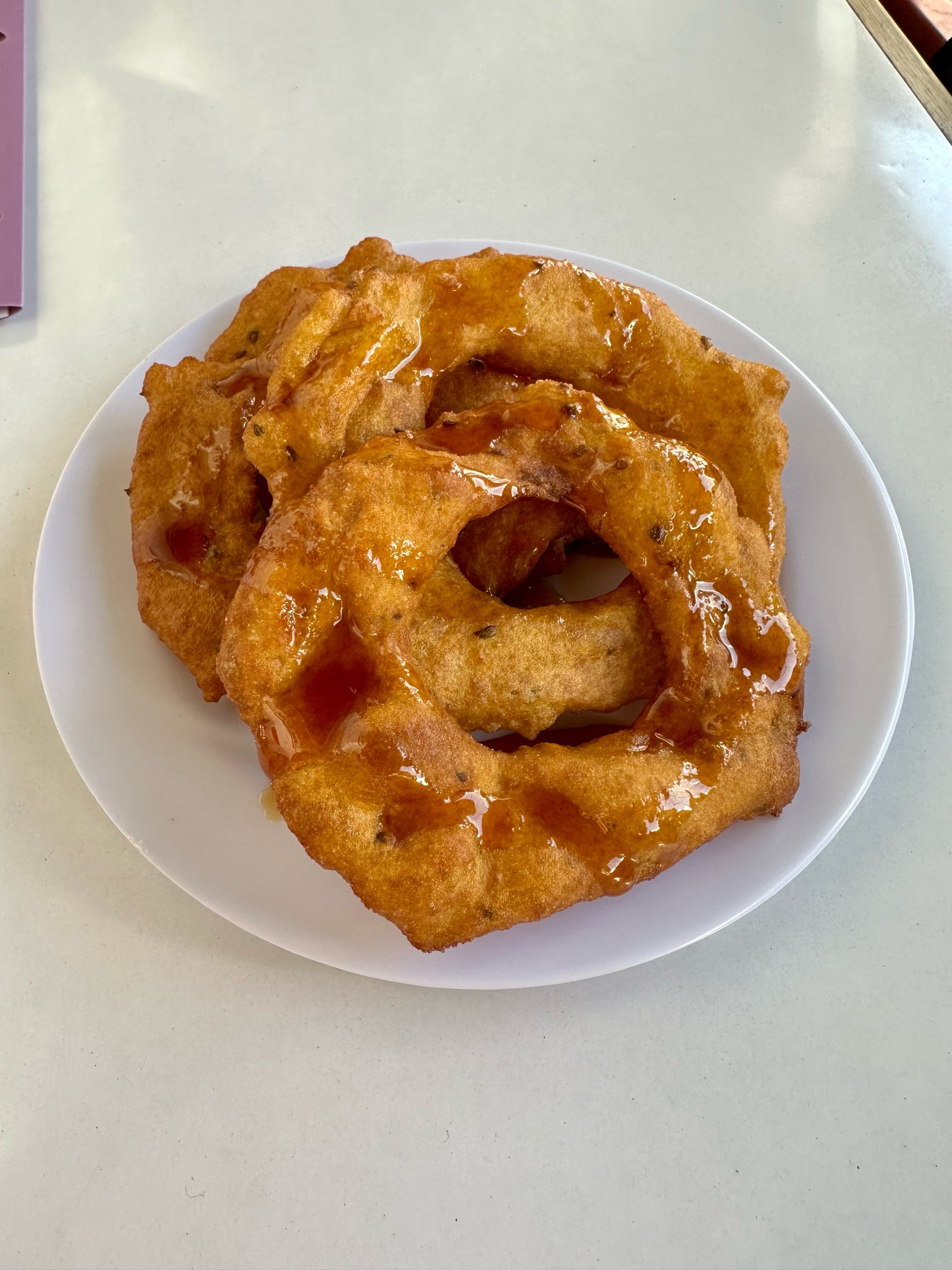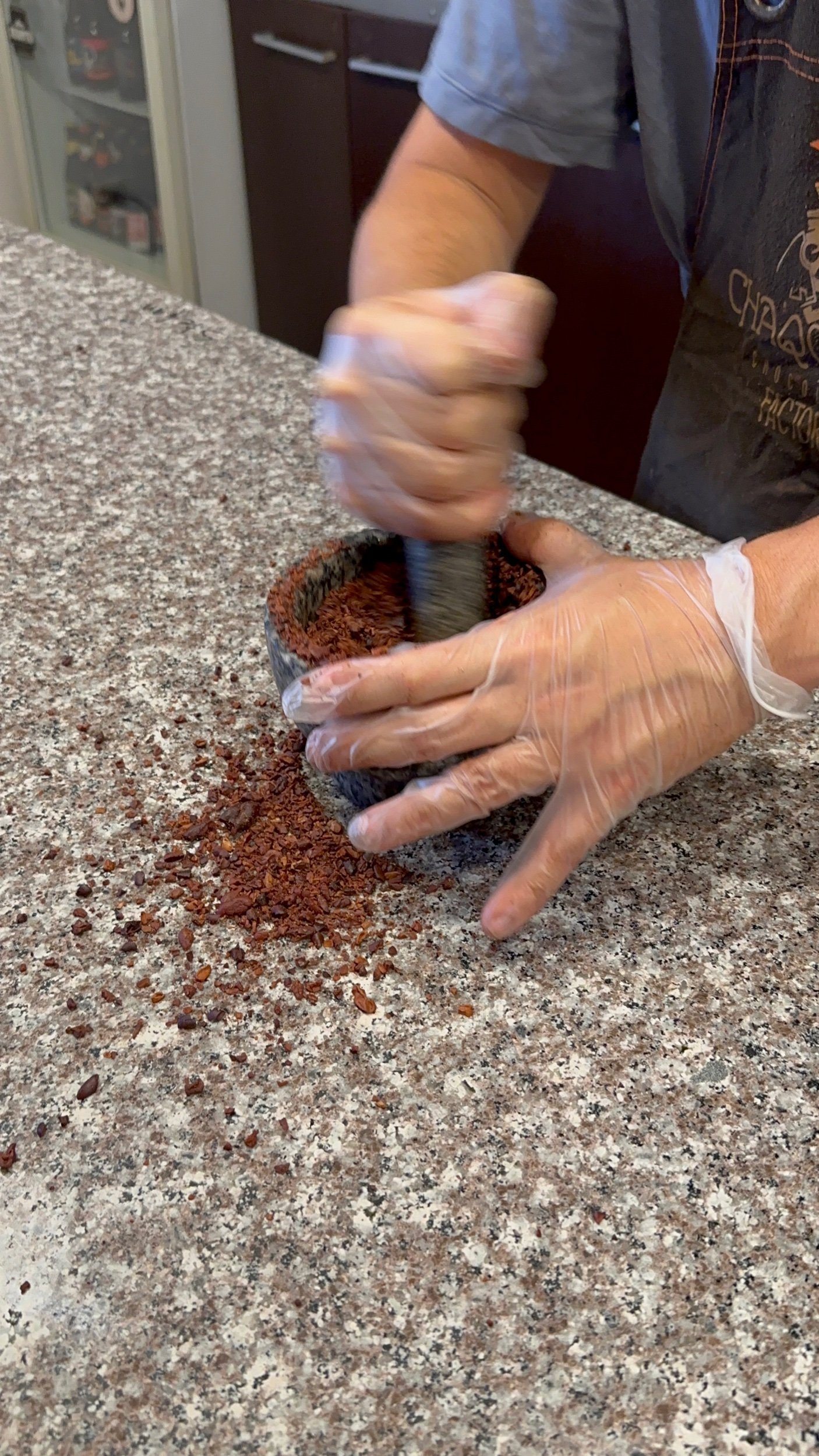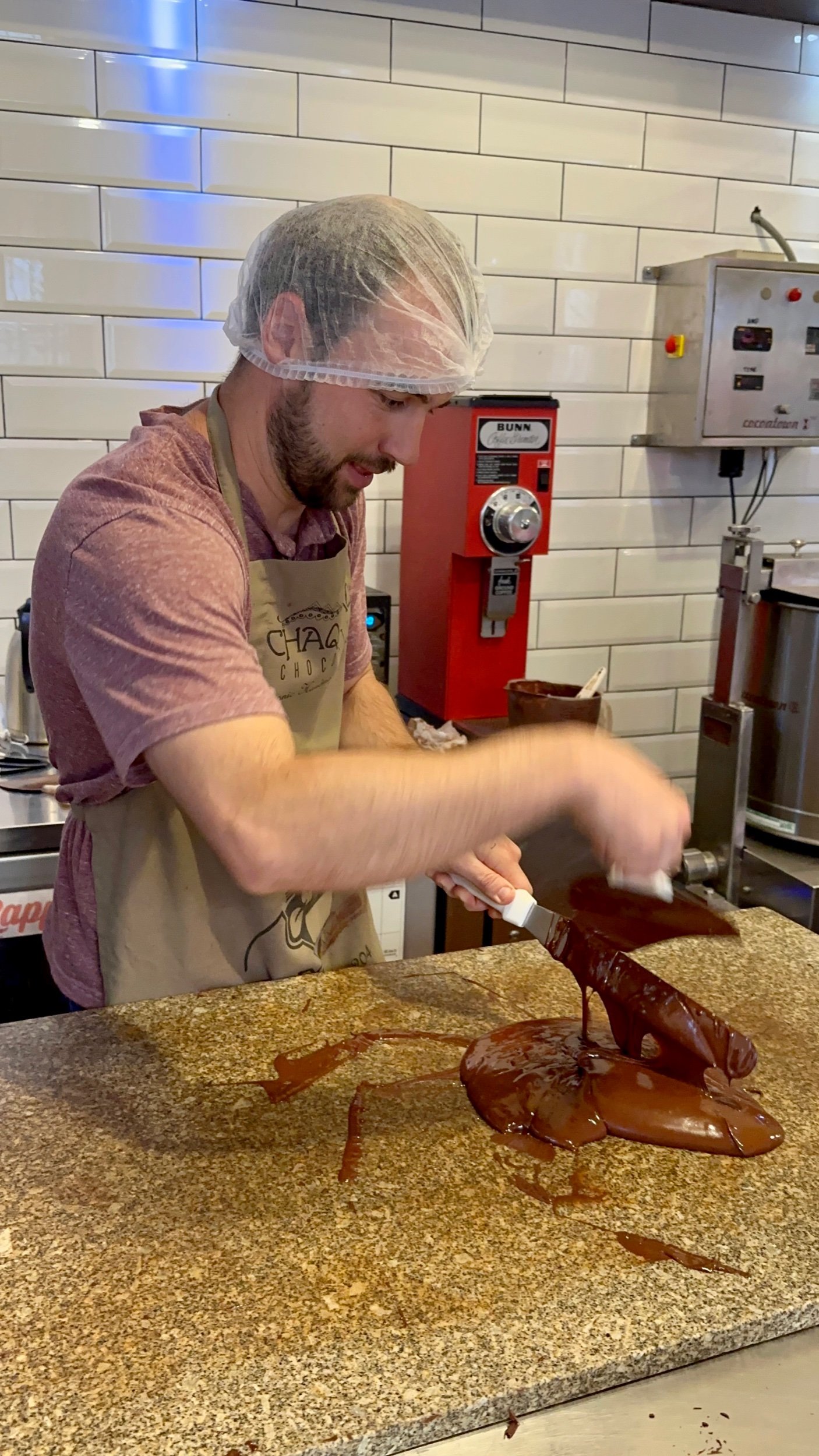Arequipa, Peru
Our next stop after Machu Picchu and Cusco was a city in southern Peru called Arequipa. Arequipa is most famous to travelers because it is the city near Colca Canyon, the world’s 2nd deepest canyon. Colca Canyon hosts many adventure activities like hiking down into the canyon, white water rafting, mountain biking, and rock climbing. We were exhausted after our 5 day hike to Machu Picchu and had no energy to partake in any of that. So we decided to rest in Arequipa and see what the city had to offer and we ended up discovering such a fun and relaxing place to spend a week!
We arrived in Arequipa on an overnight bus from Cusco so our first day involved mostly sleeping in our Airbnb. Our budget had been stretched a bit from all the tours we did in Cusco so we were determined to save some money and cook dinner ourselves this week. We made it out of our Airbnb in between naps to get groceries to make fried rice and spaghetti for the week. Then, back to bed.

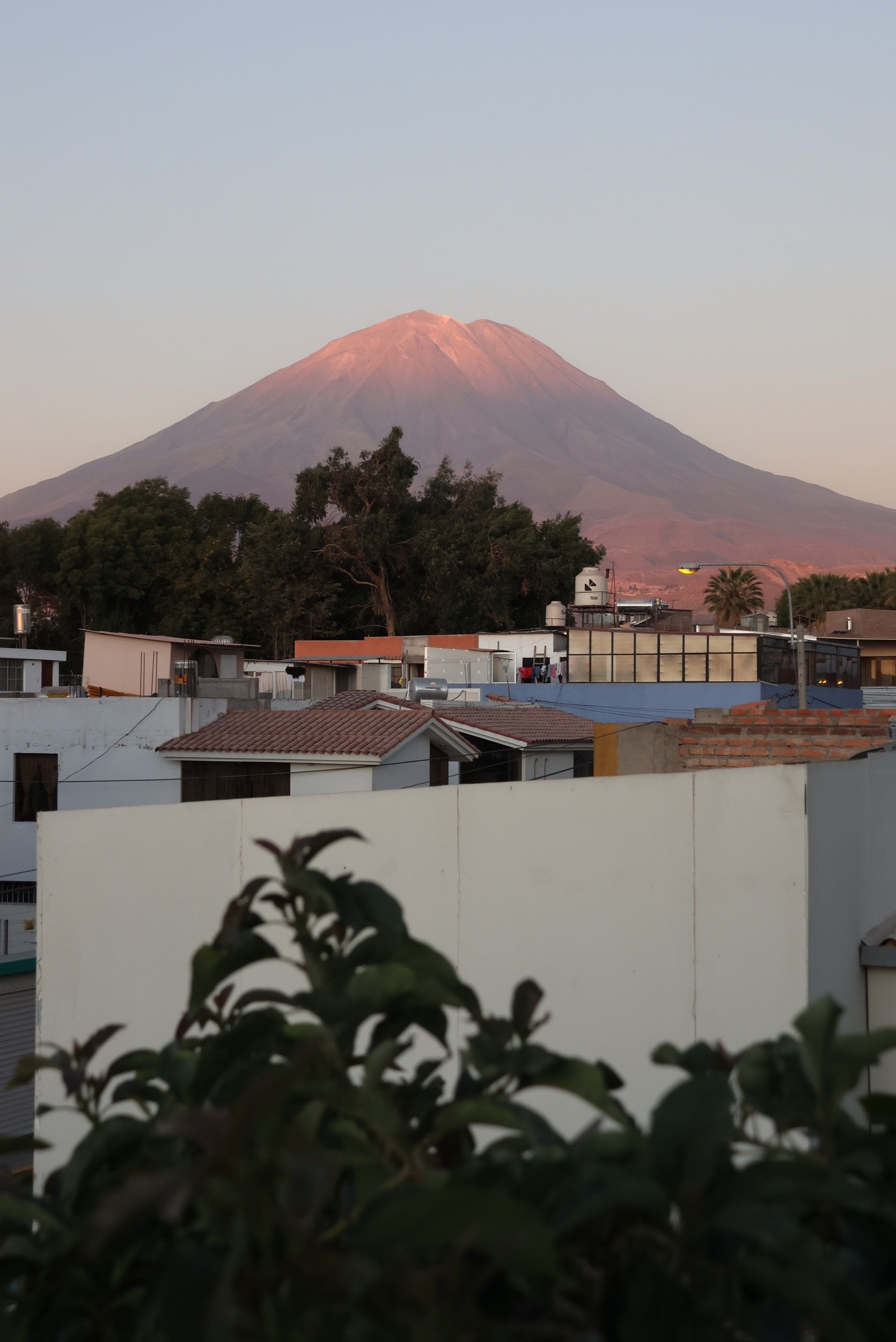
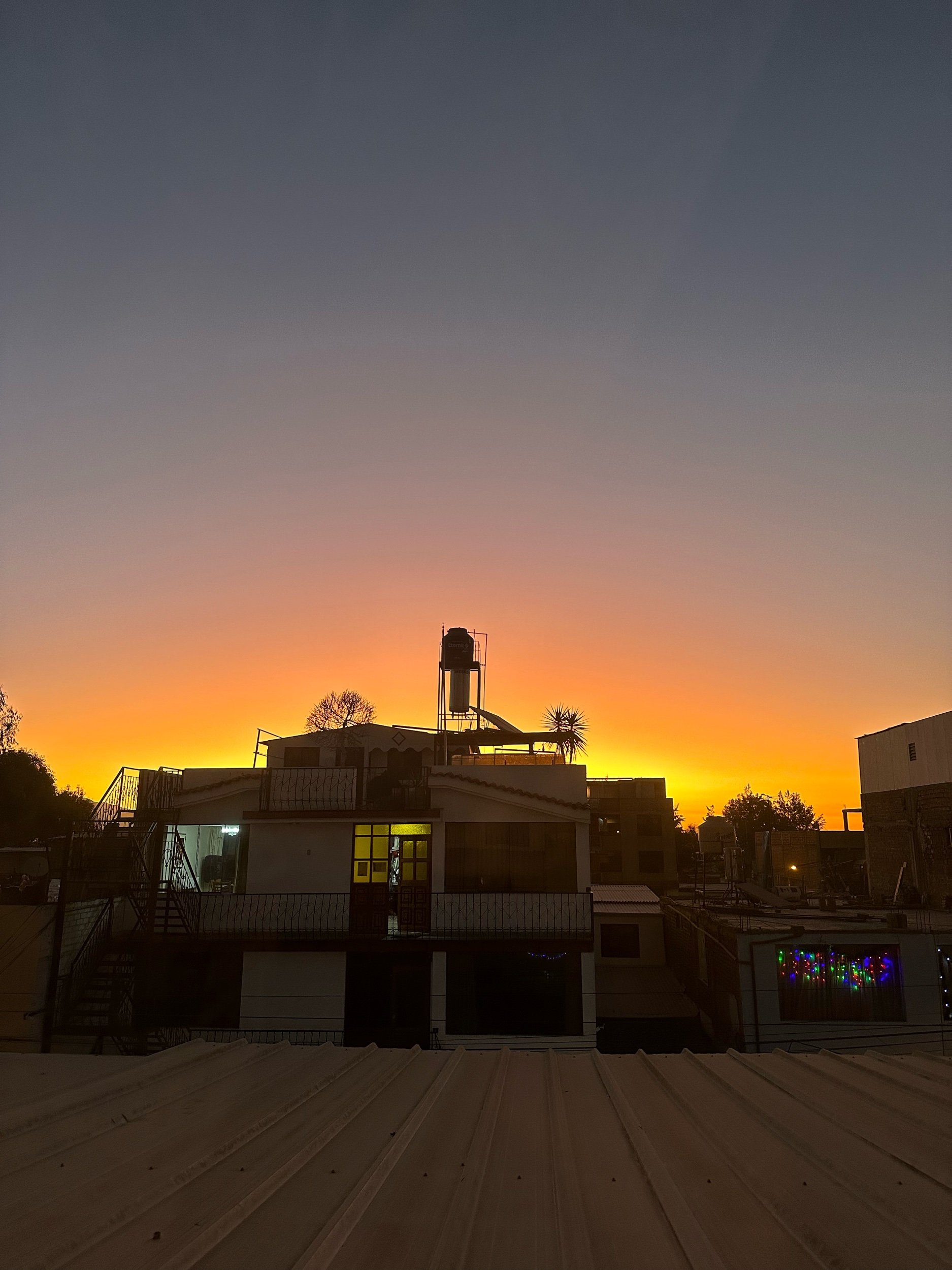
Our 2nd day we were determined to actually make it into town. We had to take the local bus to the city center which was super easy and took us right to the Plaza de Armas. We didn’t yet know how to take the buses back home but luckily Uber is pretty popular in Peru so we weren’t too worried about it. Our real goal for the day was to make it to a brewpub to watch the USA play in the World Cup. We knew we were going to eat lunch there so we stopped for a snack at Chaqchao Chocolates and had a delicious piece of Chocolate Pie. We found out they offered chocolate making classes and signed up for a class the next day. Then we made our way to the Chelawasi Public House to watch the game. Here we had a sampling of Peruvian beers (Susan’s favorite was Loba from Arequipa, a beer made from peruvian purple corn, while Matt liked the Maracumanto from Cusco, a fruity pale ale), chicken wings (!!!), and salchipapas (a plate of fries with sausage and a fried egg on top), and watched the USA whoop Iran with some locals. We were pretty full after all the pie, fried food, and beer so we headed home for a siesta before our home cooked dinner.
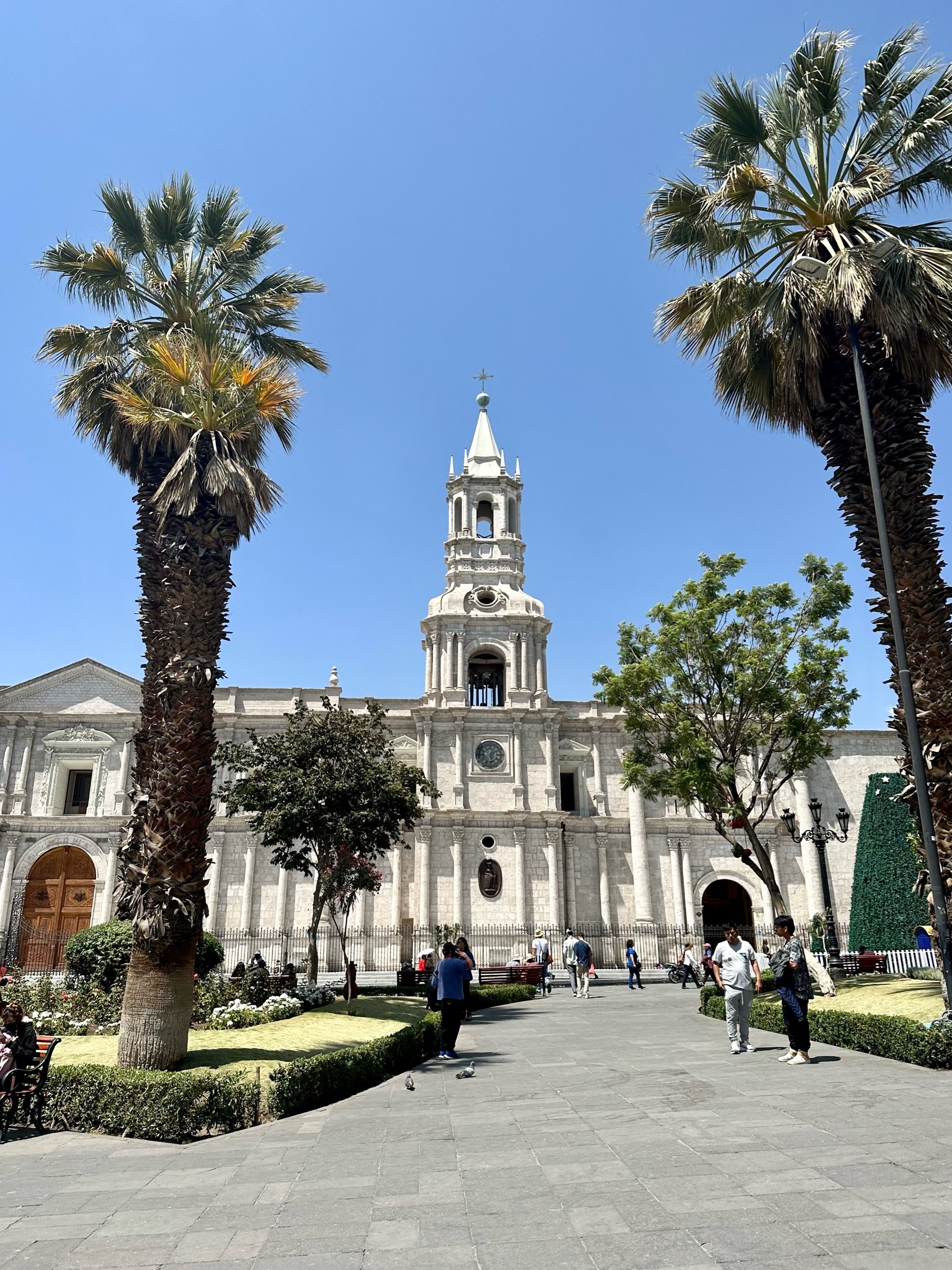
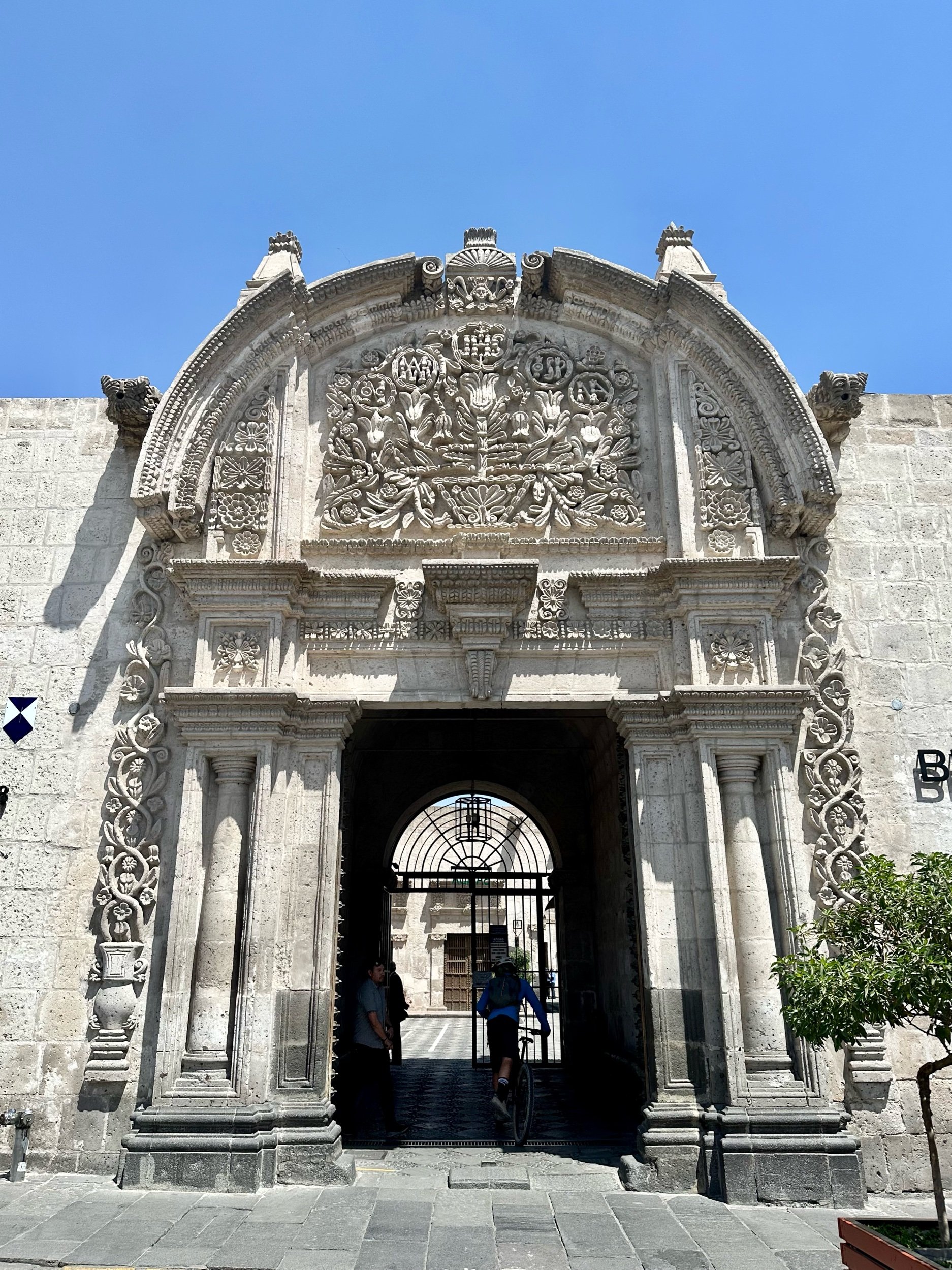
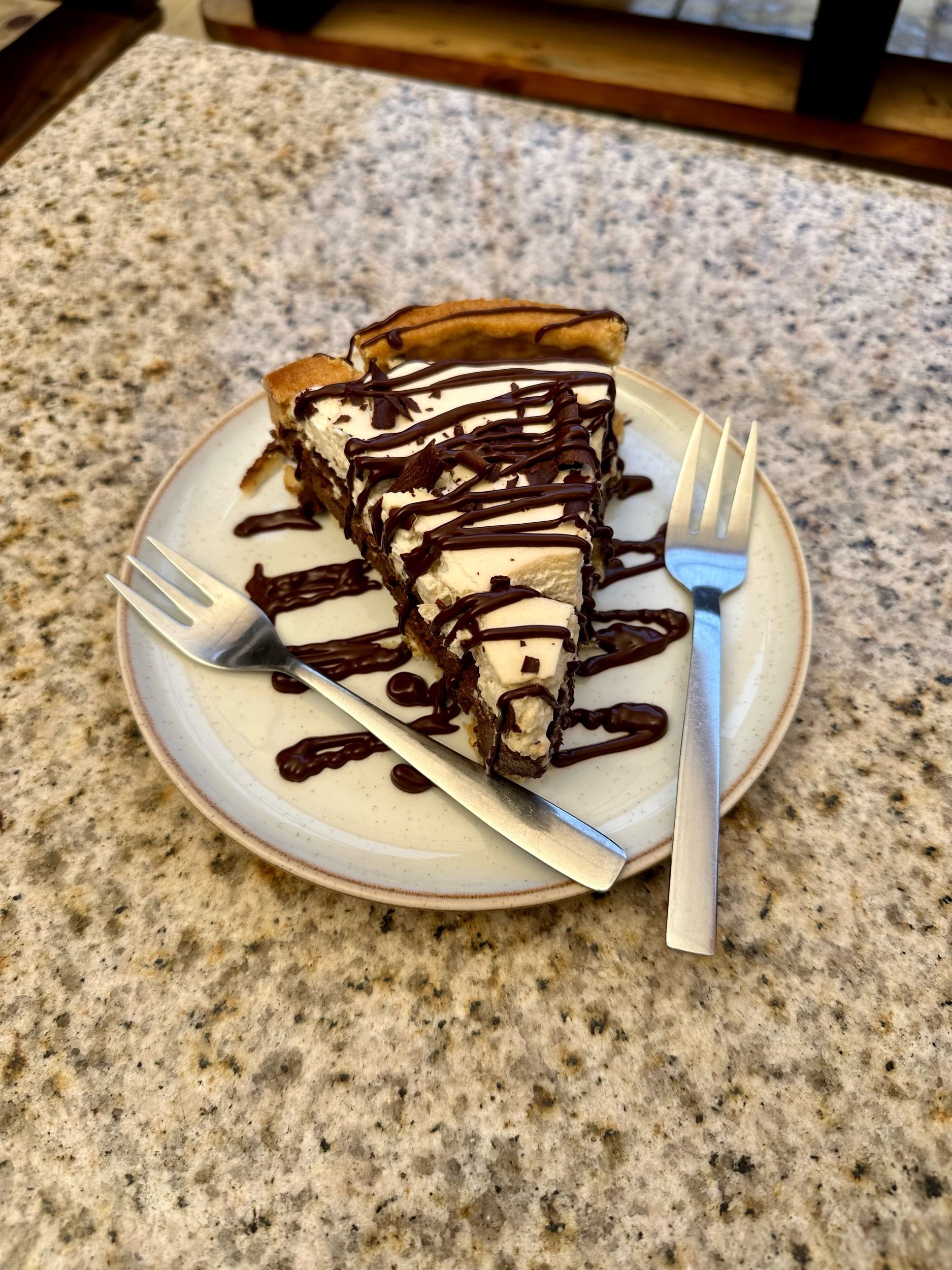
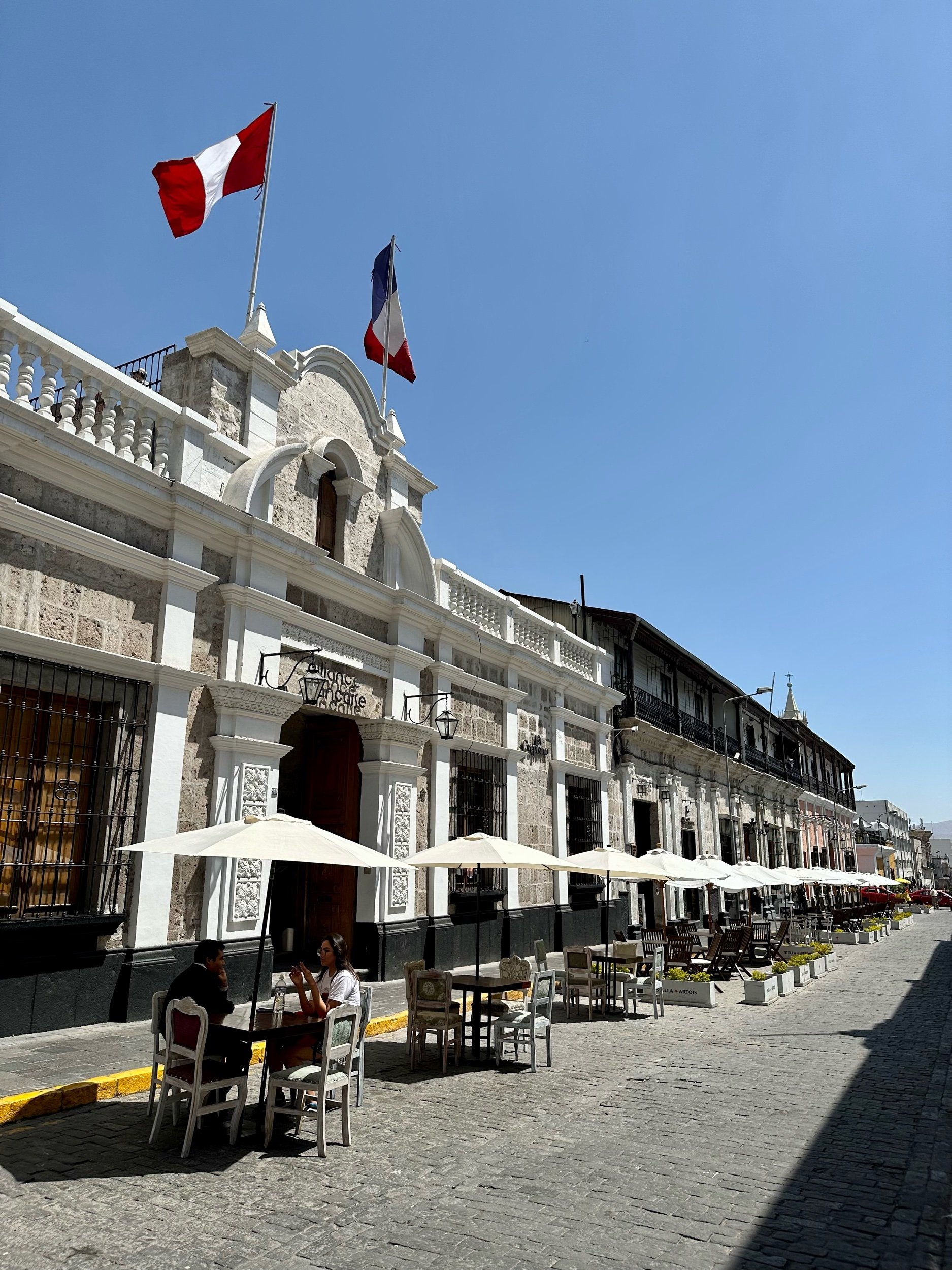
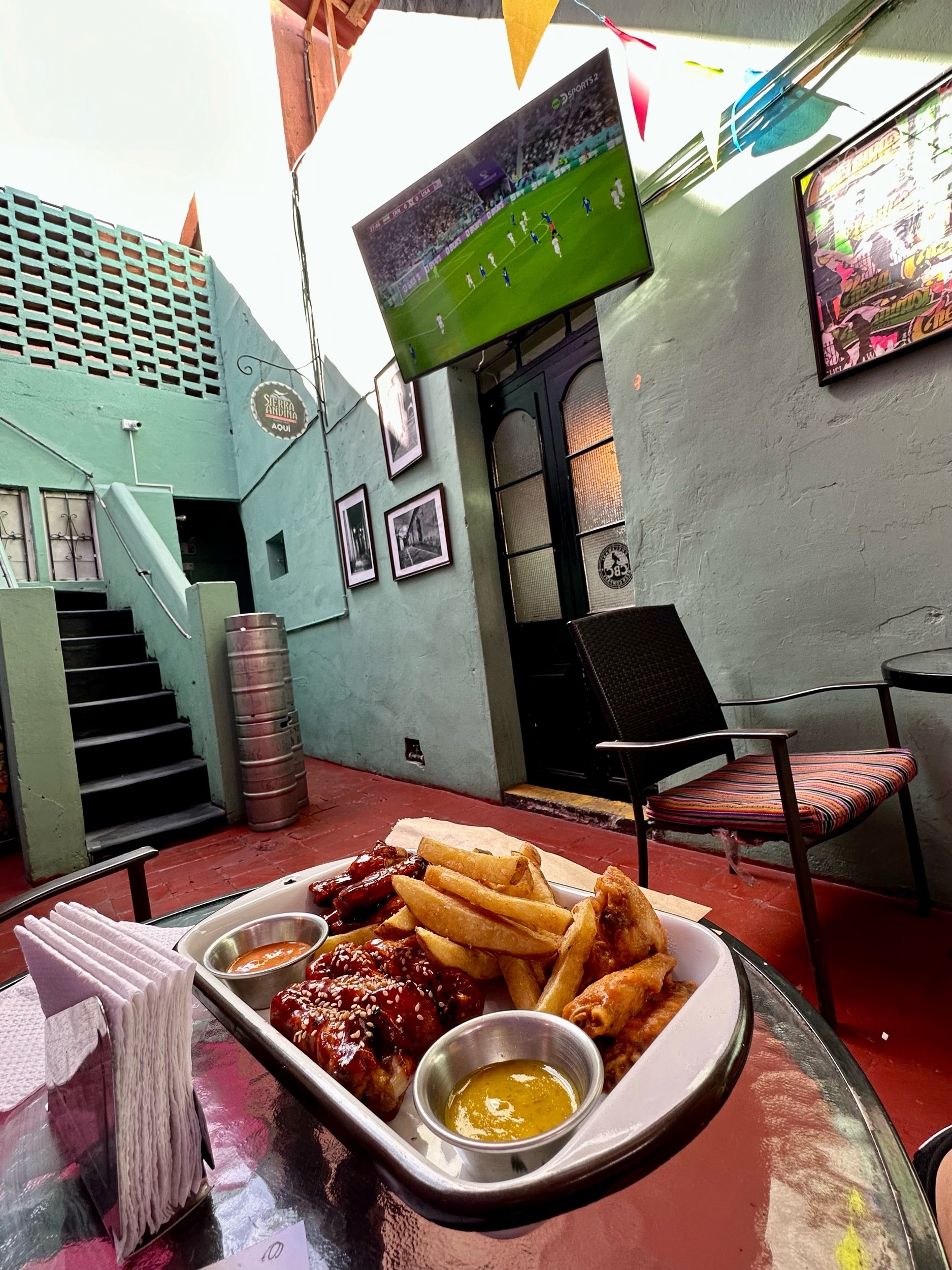
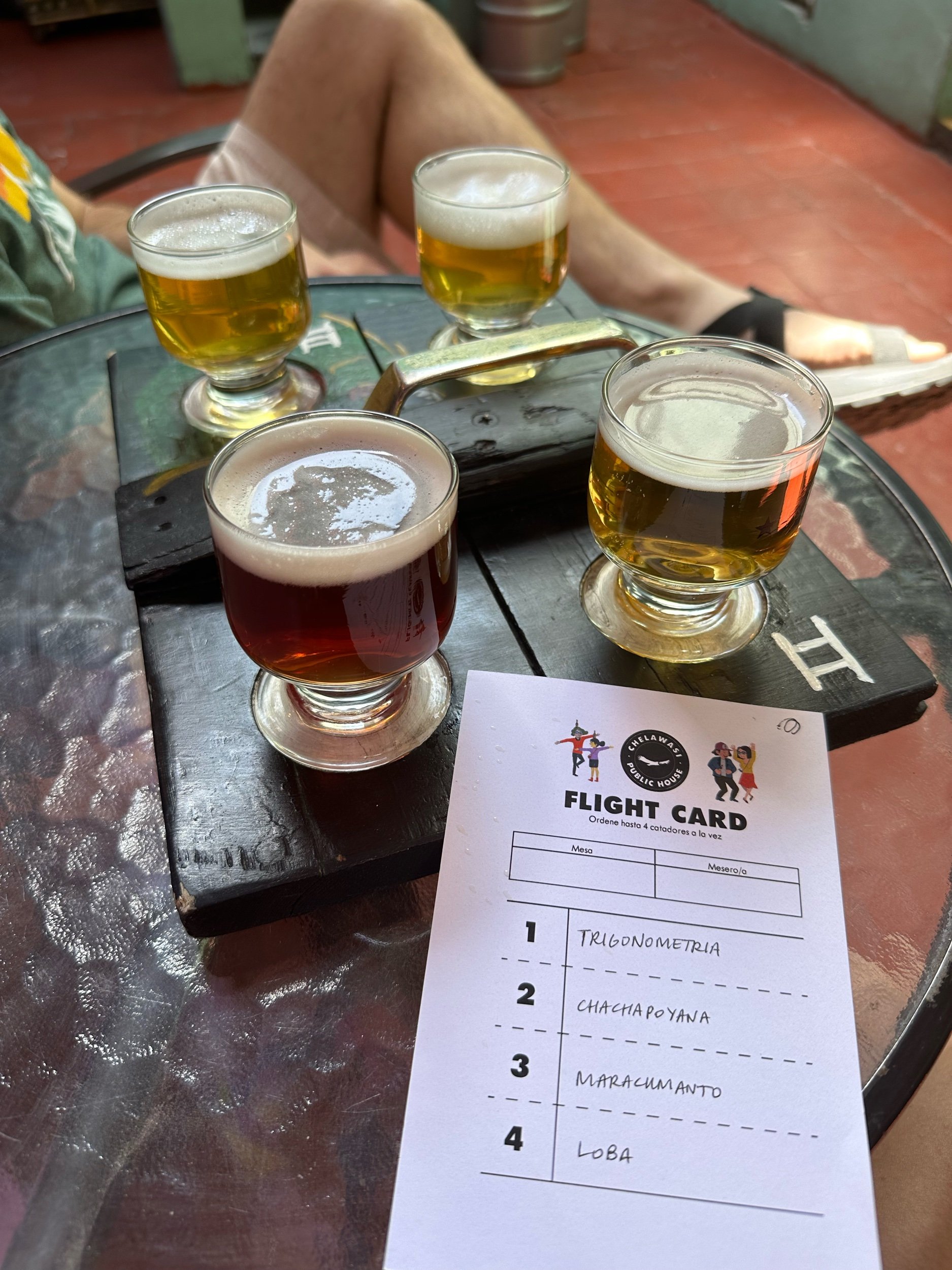
Our third day in the city again revolved around food. We went to an incredible Peruvian steakhouse for lunch called Zig Zag. We ate grilled beef, alpaca, and lamb that were served sizzling on a hot, volcano rock. For sides we had ratatouille and a creamed quinoa (pesque de tres quinoas) that was delicious and we regret not asking for the recipe. Lunch was paid for by my friends who suck so much at picking NFL games they let someone who hasn’t watched a game in a month win the weekly gambling pool, thanks guys!

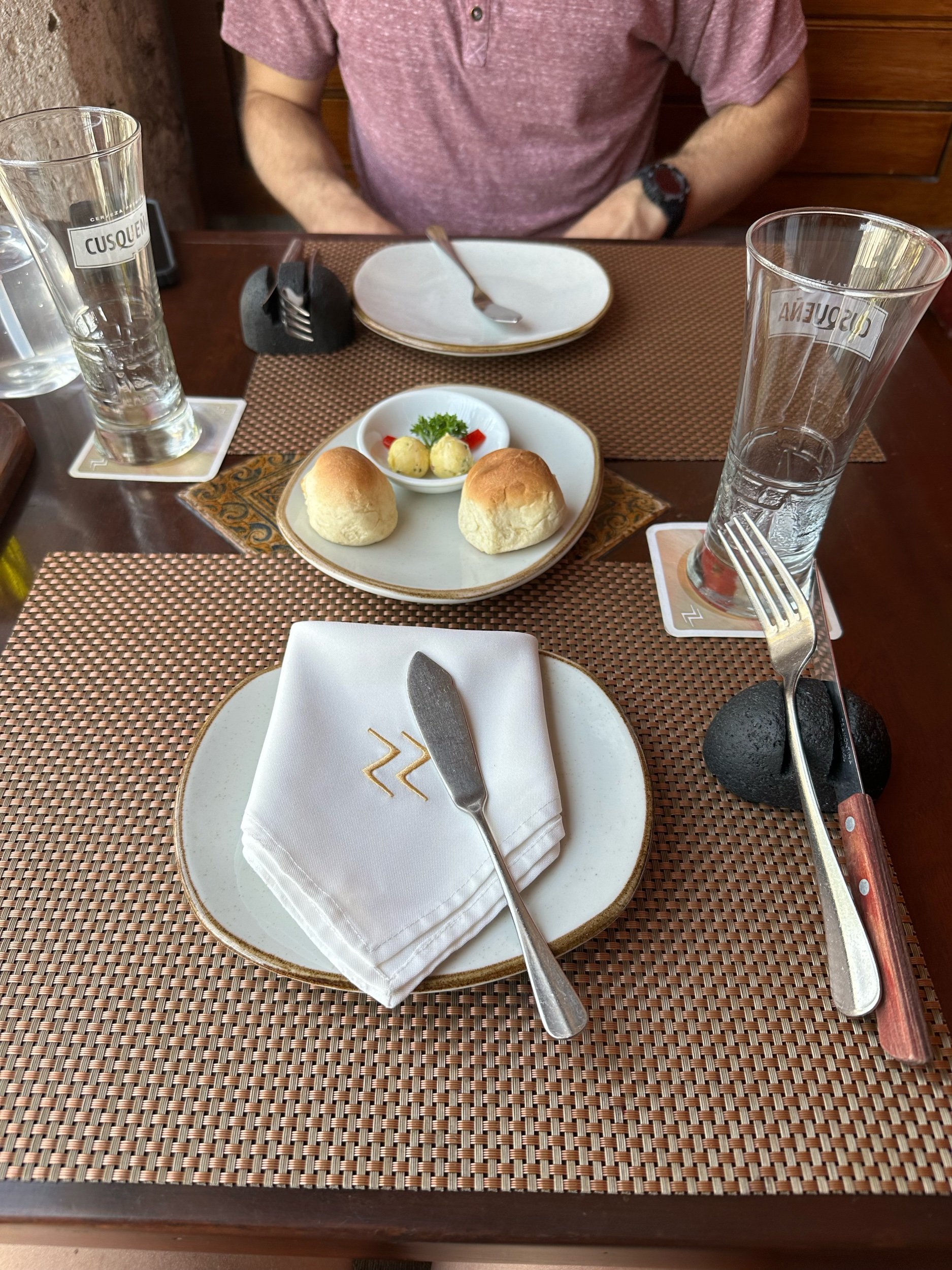
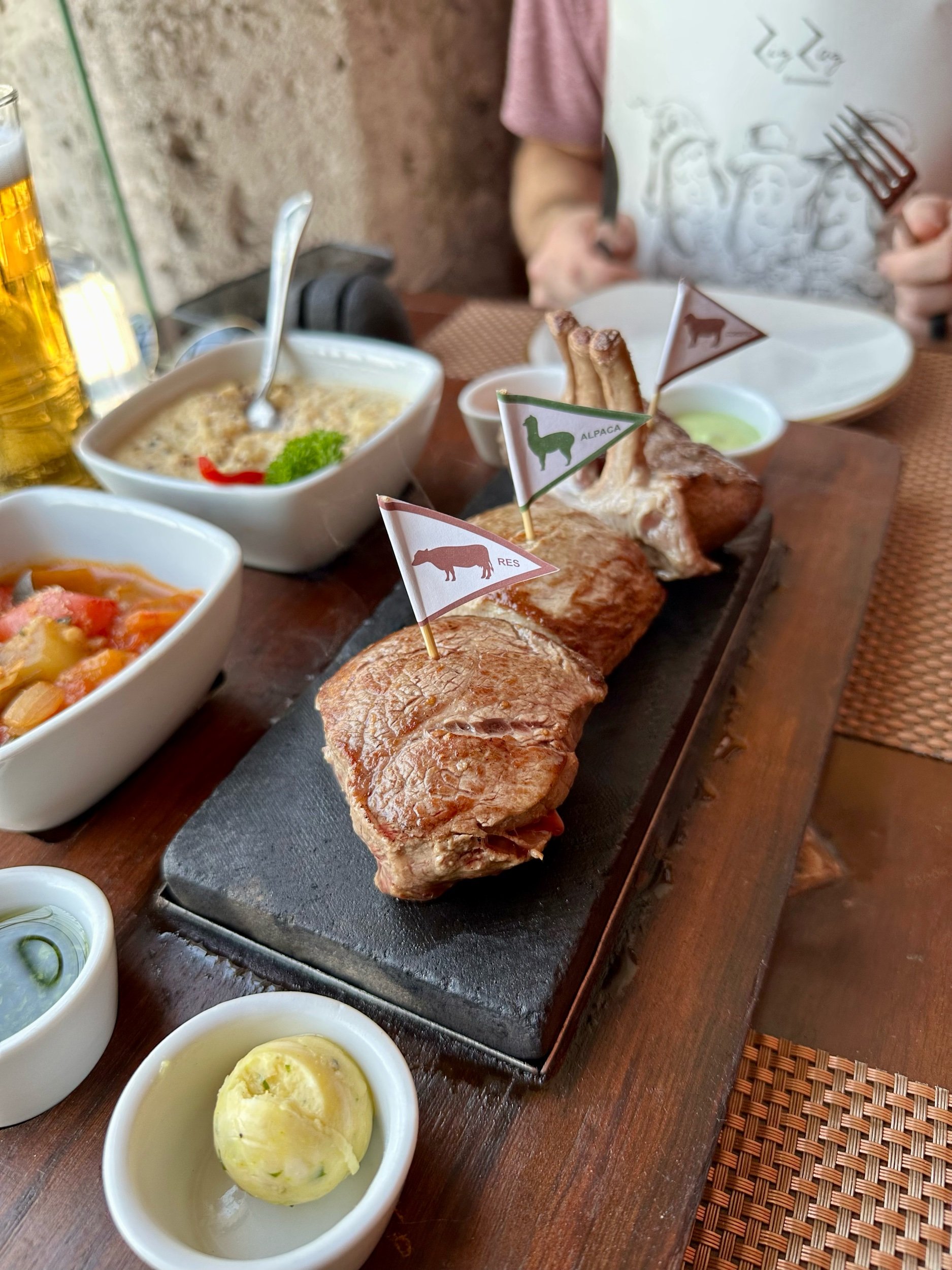


After lunch, we went to our chocolate making class! In the class we learned about how cacao beans were made into Xocolate, a fancy cacao tea drink for the elite Inca’s. This tea was very bitter since they didn’t add any sugar and the cacao beans are naturally bitter (think dark chocolate). The Incas also added some spicy rocoto pepper powder to the drink so it was a very unique taste profile in the old world and thus reserved for royalty. The Spanish tried this drink and some conquistadores liked it but many hated it so it wasn’t till they explored Mexico that a Spaniard actually brought it home to Spain. Back home they made some modifications with European ingredients and they called it a Coco latte, or chocolate! We then learned the history of how different Europeans created cocoa butter, the first chocolate bar, milk chocolate, dark chocolate, fake chocolate, and everything in between. We then got to make our own chocolate starting from the cocoa beans, sorting them, roasting them, peeling them, grinding them into a paste, combining them with sugar to get chocolate sauce that everyone would recognize, and then tempering the chocolate and pouring it into molds for our own personal chocolate bites. They were delicious!

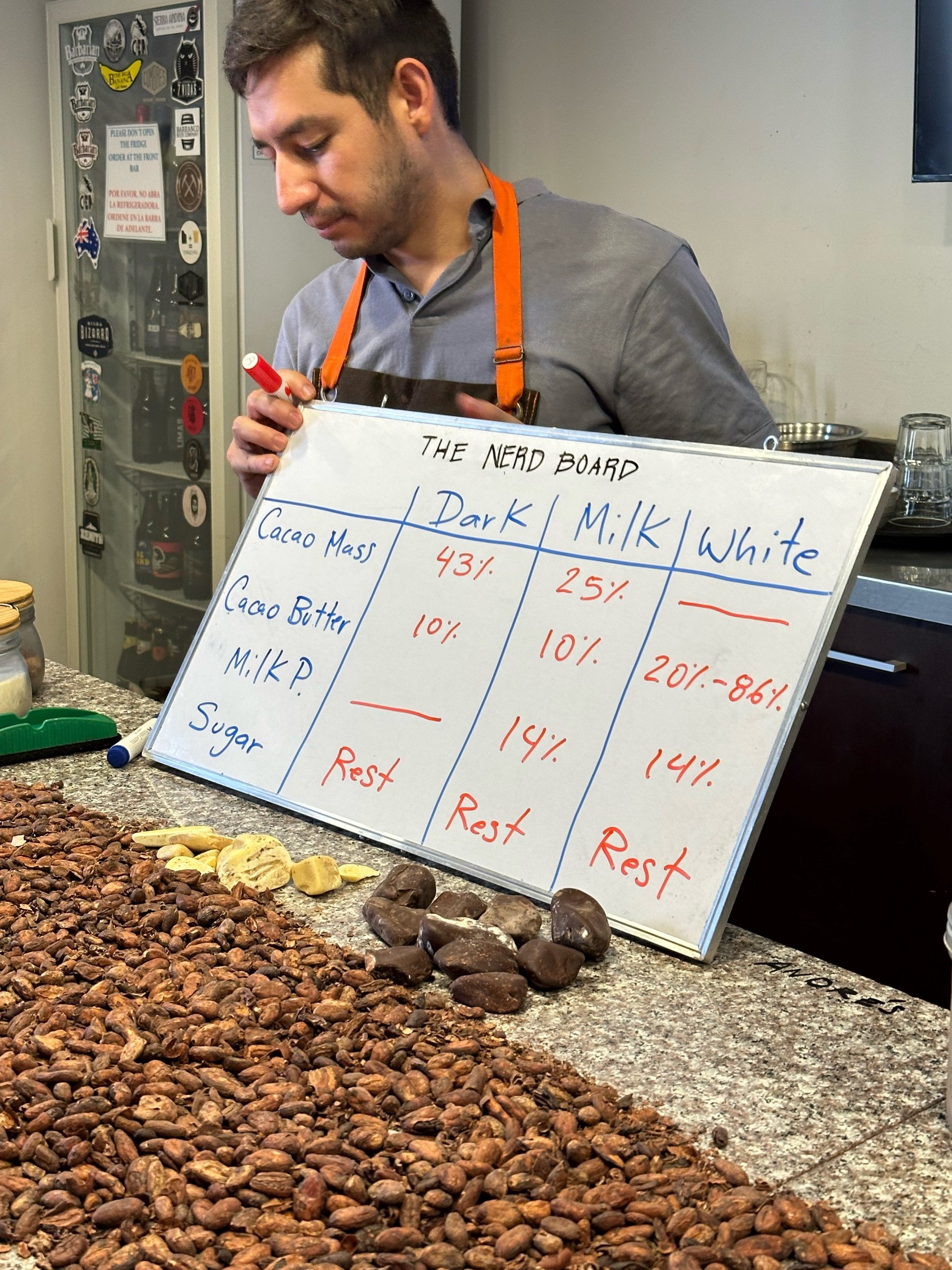
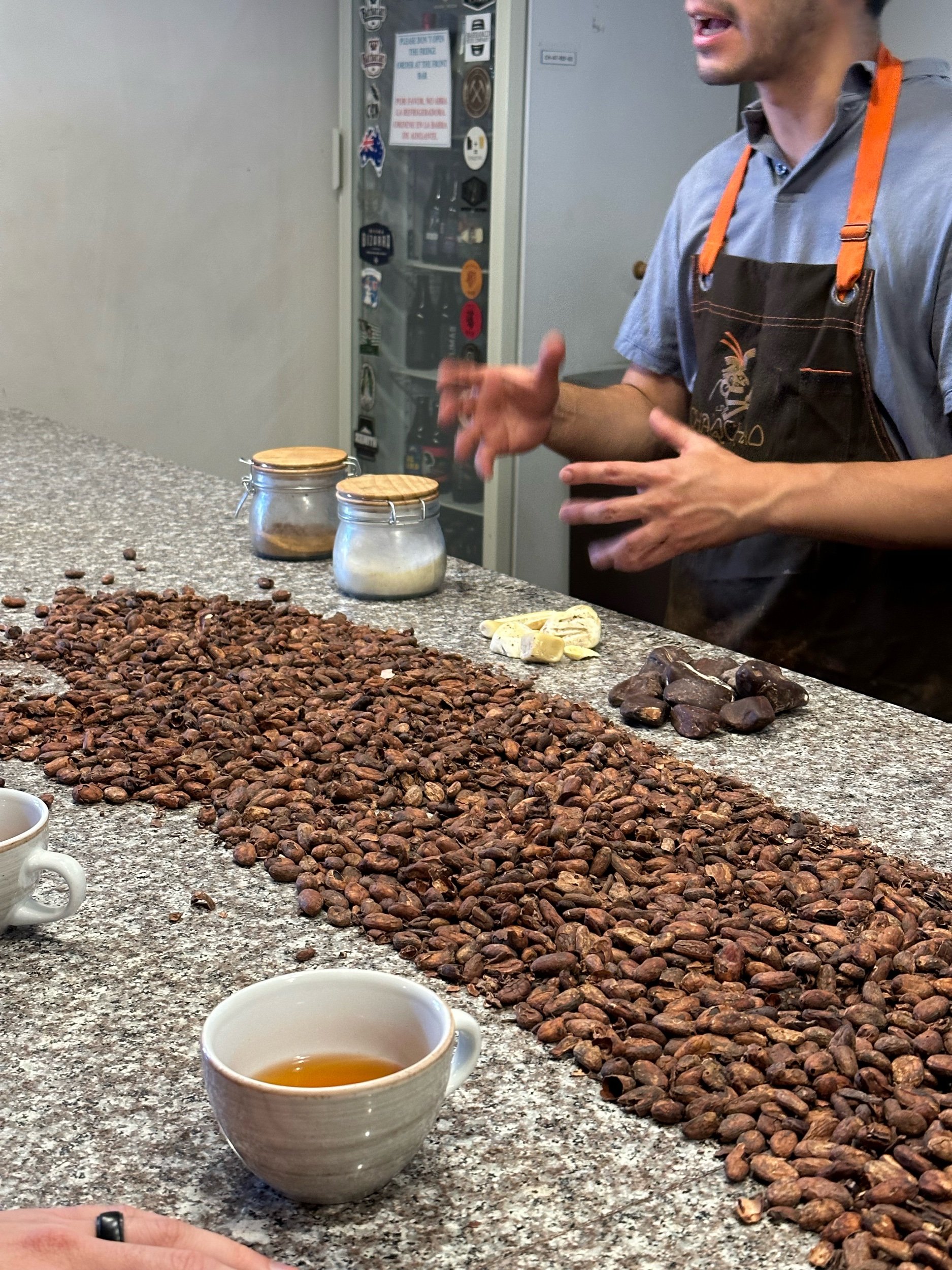

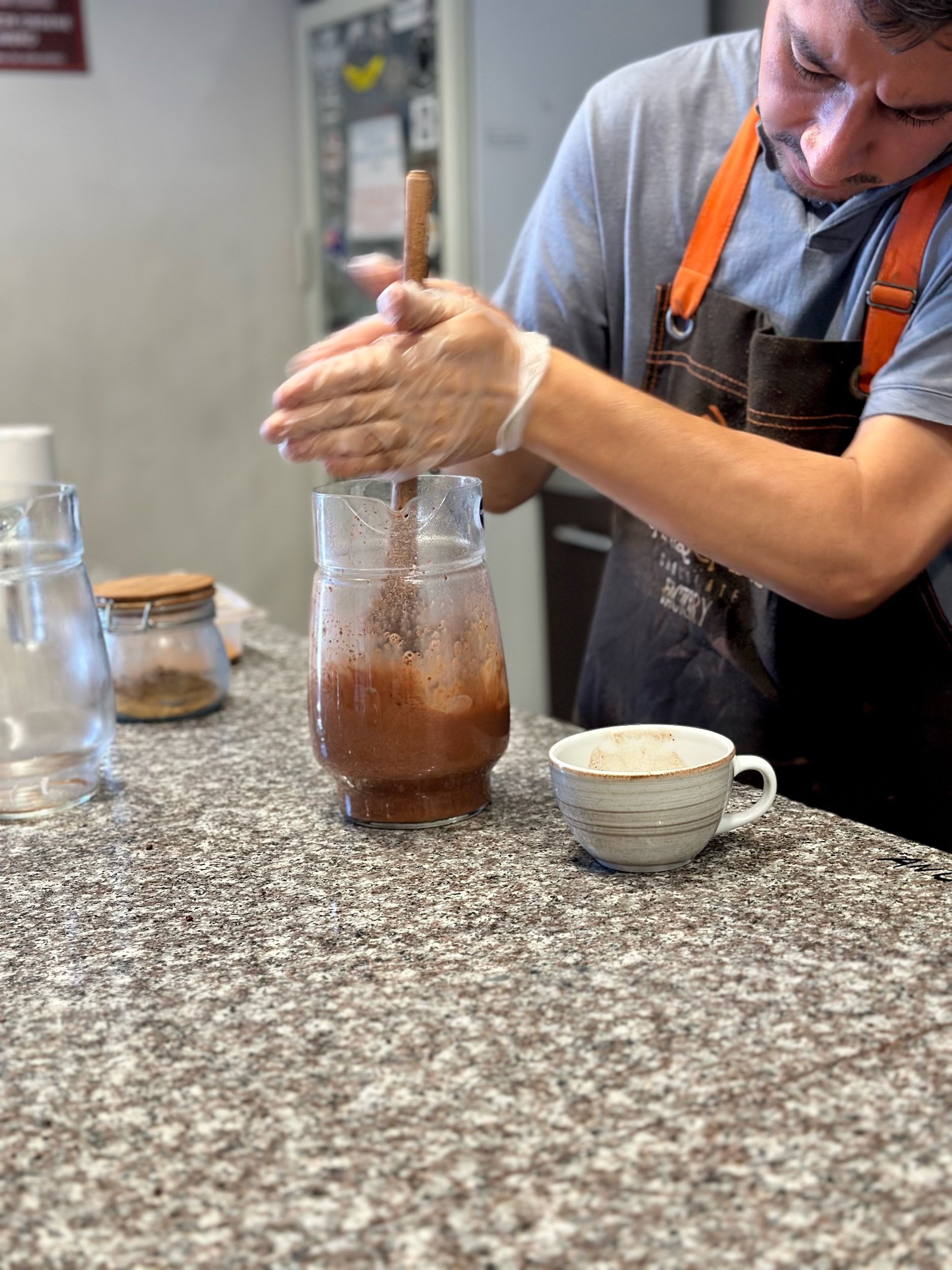
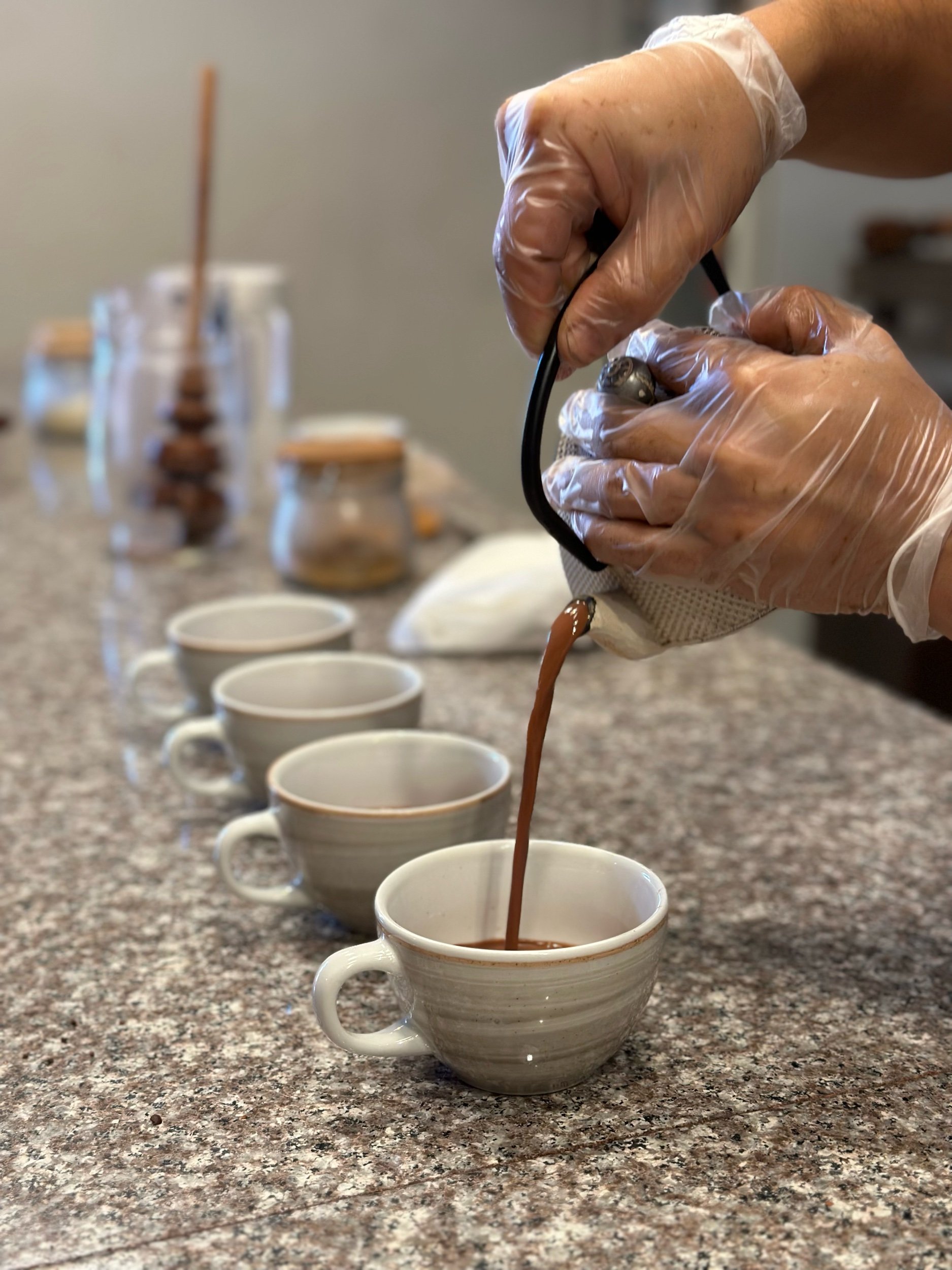
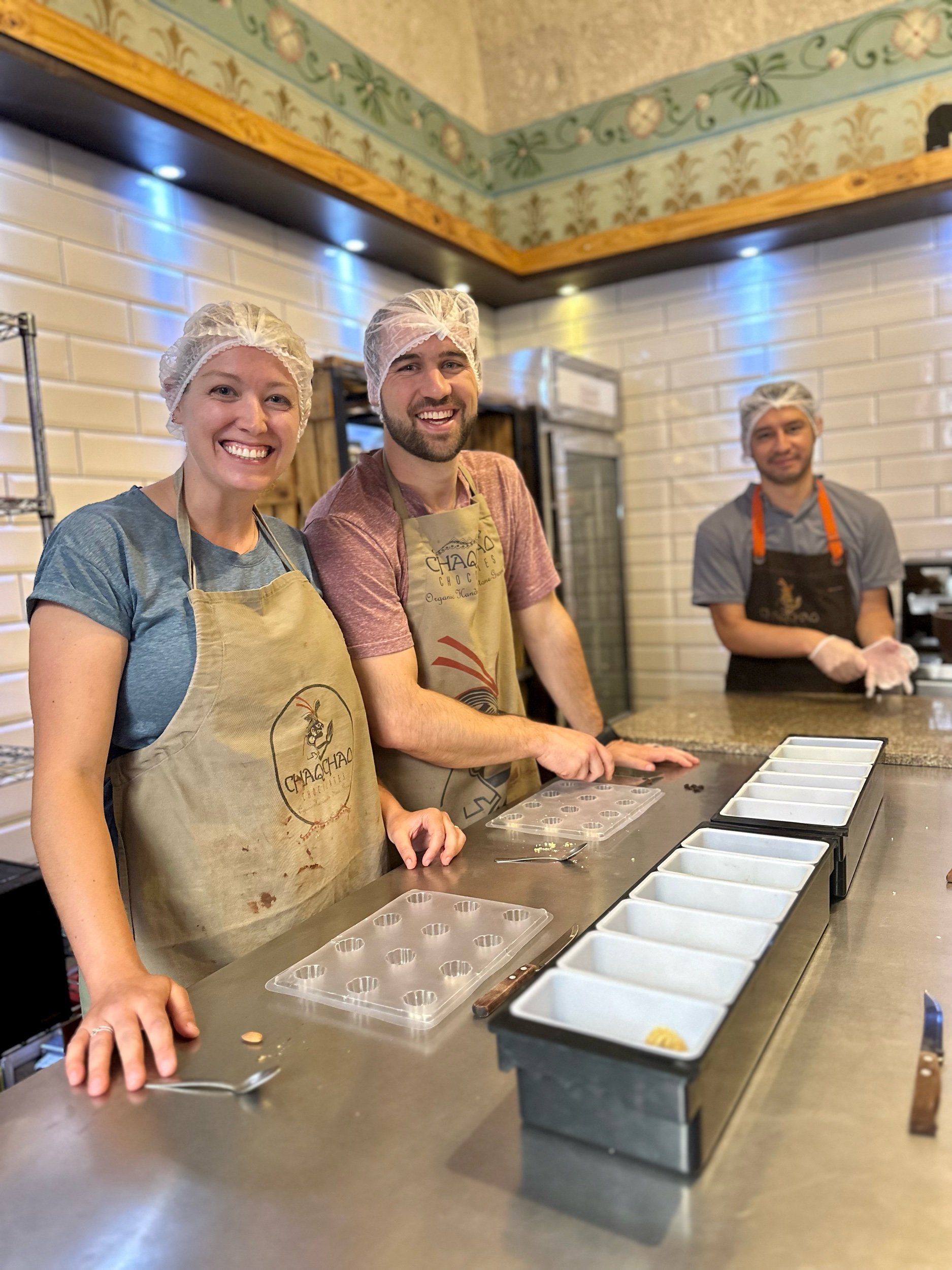

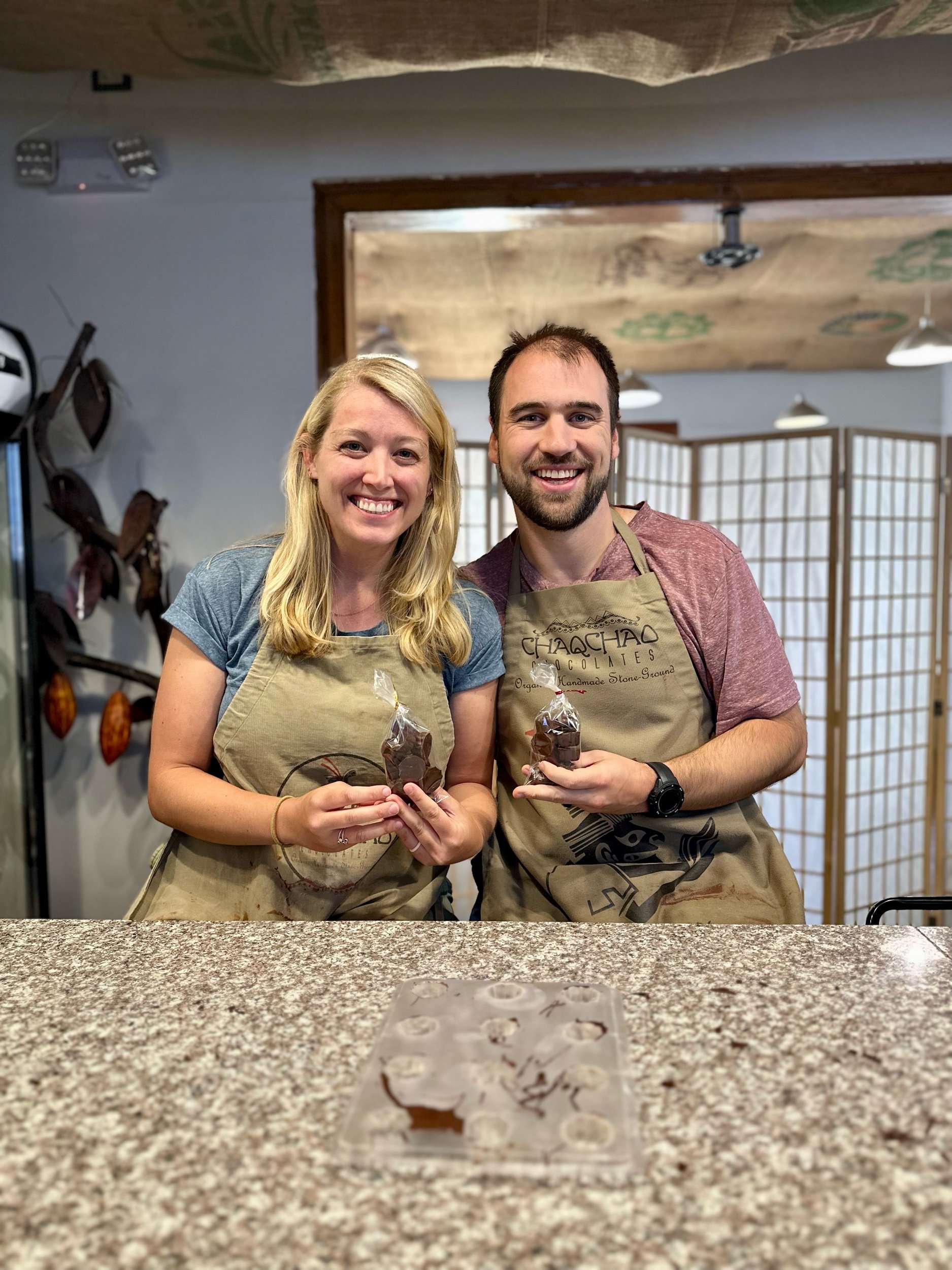
After the class we were invited to our Airbnb host’s birthday party! They made some delicious Peruvian dishes including roasted lamb ribs, crispy pork belly, potatoes, and the spiciest hot sauce I’ve ever had in my life. It was a lovely celebration and we got to meet some locals and other guests at the Airbnb, Happy Birthday Chamo!
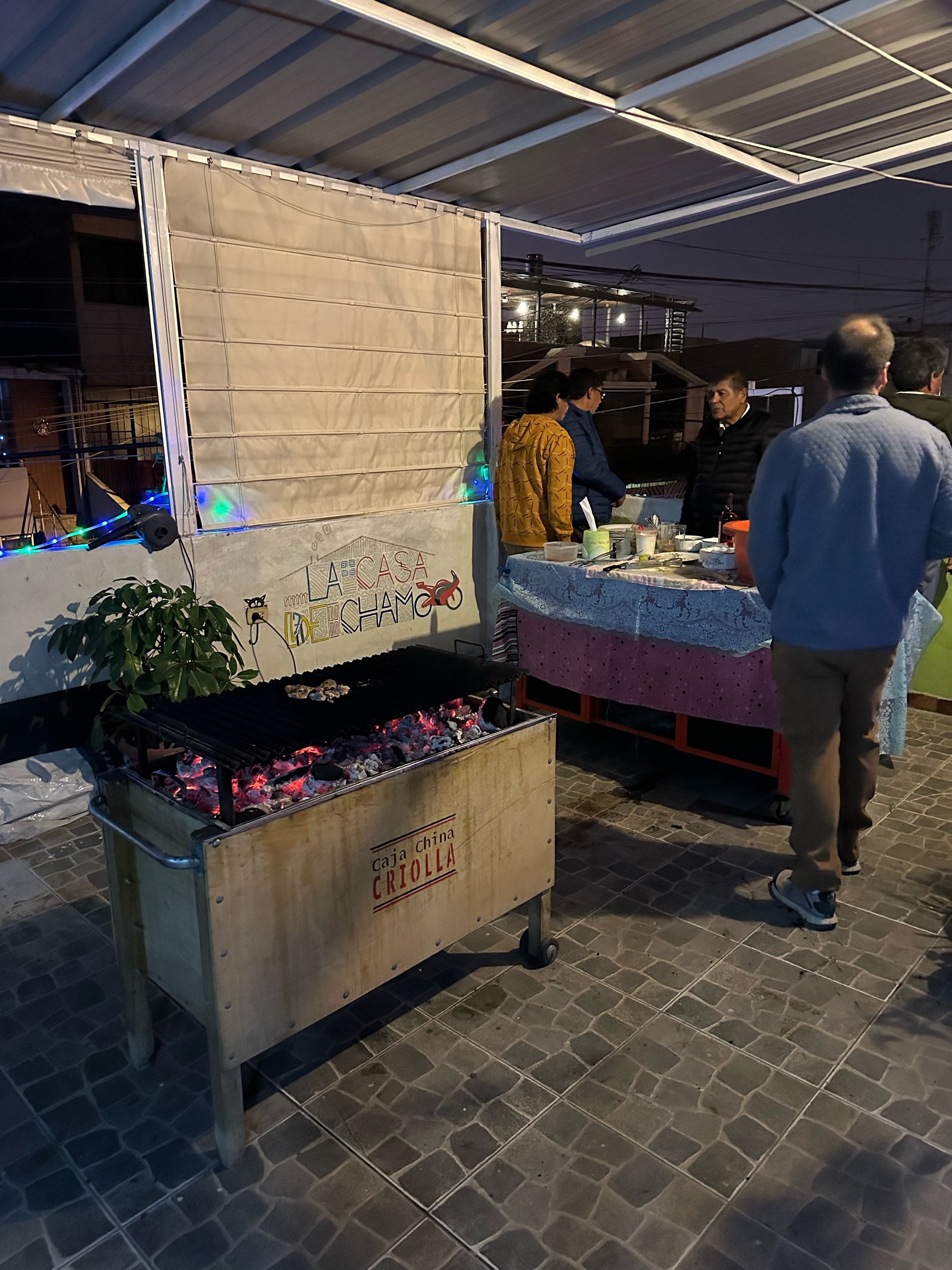
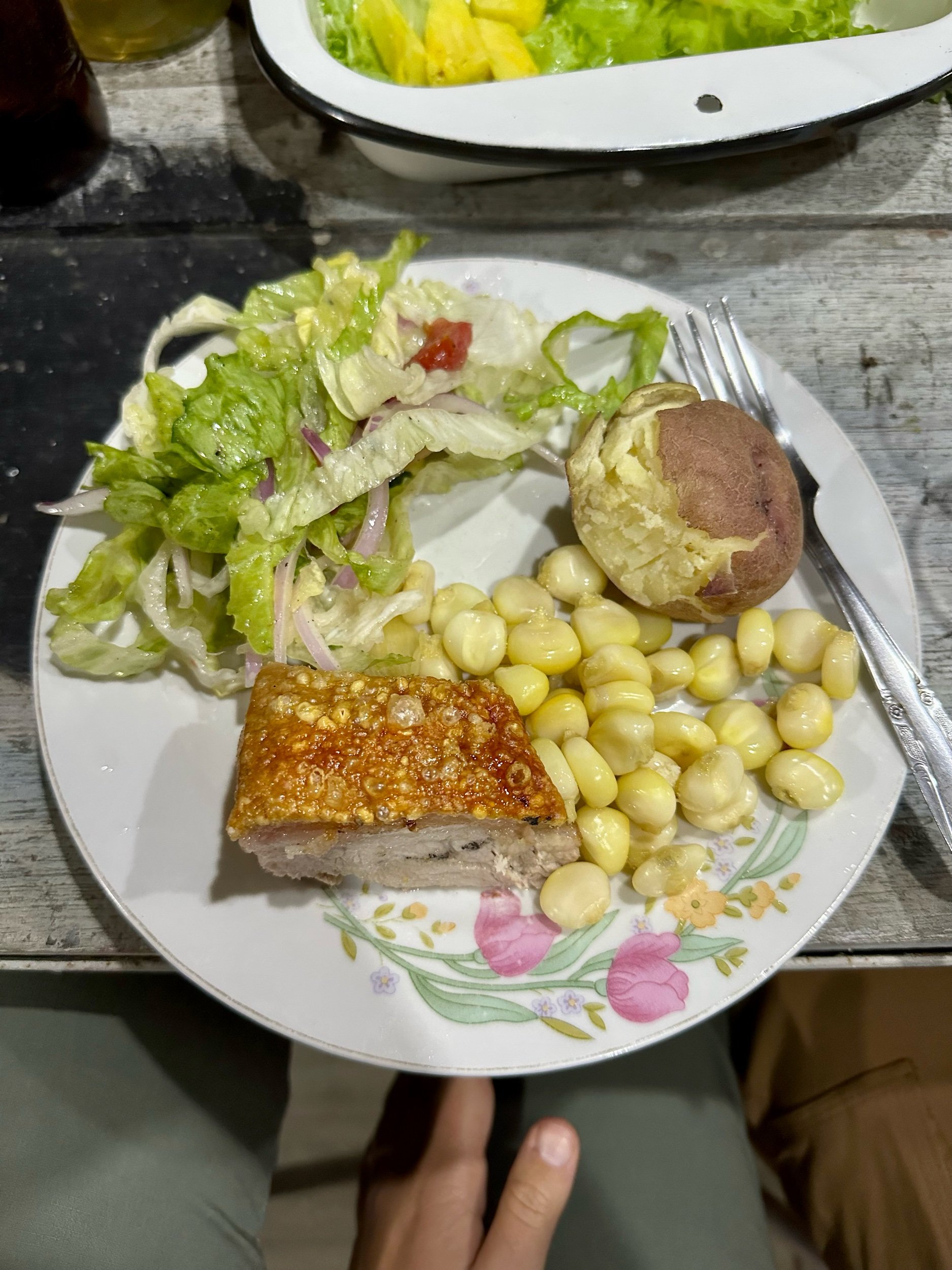
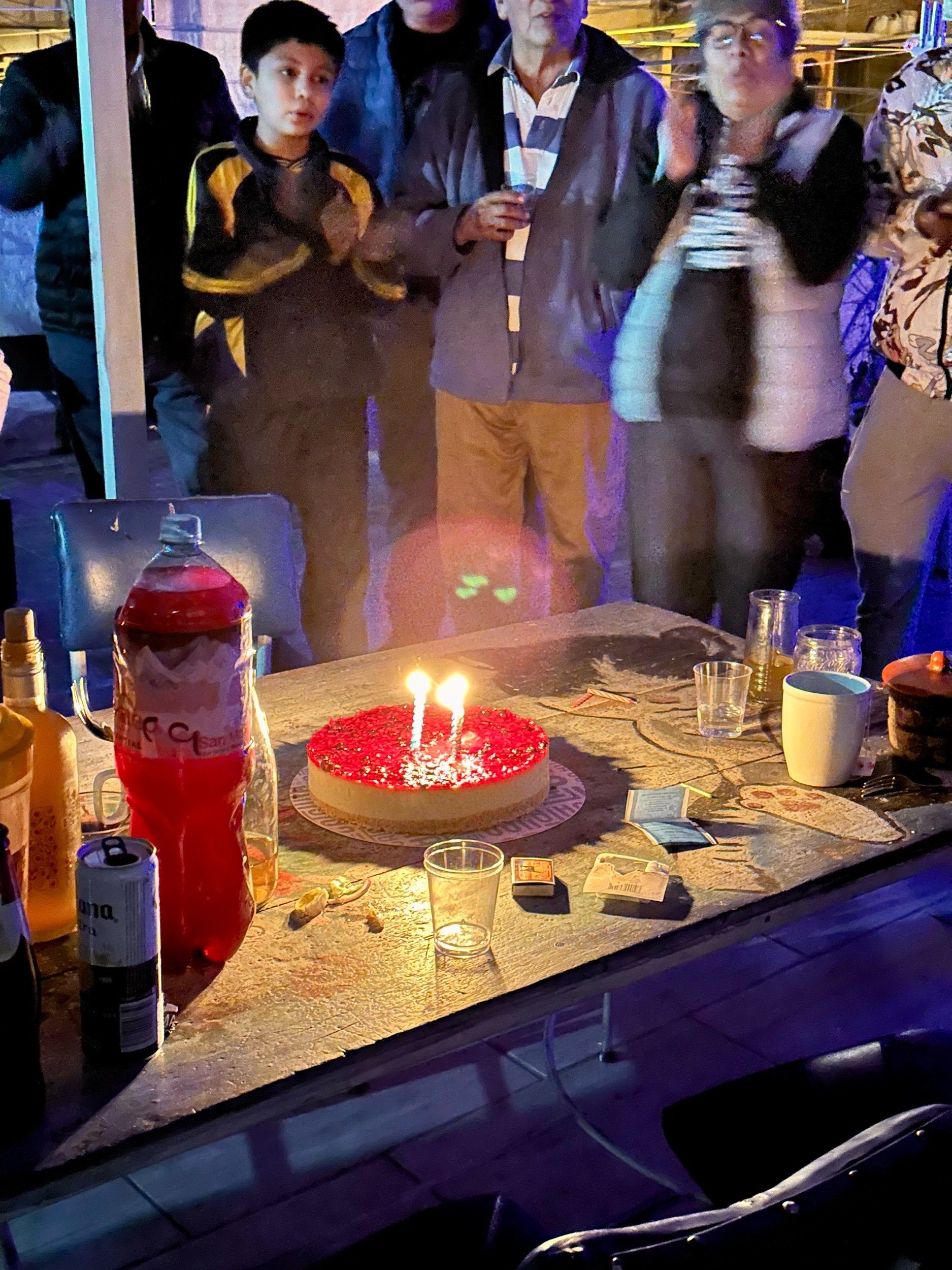
On day 4 we decided to finally do some tourism things rather than just eat lunch and go home to nap. We did a free walking tour of the city and learned some interesting historical facts. Arequipa was founded by the Spanish, so it didn’t exist in the Incan empire, and originally was a trading post for the mining operations nearby. Arequipa sits at the base of 3 volcanoes, only one of which is active. Most of the buildings are made with white volcanic rock and gives the city its nickname “The White City”. We learned some more about the culture and culinary history of the Incas. Then we went to see Juanita, a frozen mummy from the times of the Incas! She was found at the top of one of the nearby volcanoes by a geologist in the 1990’s. Juanita was a child who was sacrificed to the gods by the Incas. They believe she was sacrificed to calm the gods after the volcano erupted. She was wrapped up in blankets and ornaments and buried in a tomb at the top of the mountain. It wasn’t until the glacier at the top of the volcano melted with the more recent eruptions in the 90’s that her tomb was exposed and she fell out of the tomb. She was still frozen and in good enough shape when they found her 15 days after she rolled out of her tomb, that they were able to carry her down the mountain and preserve her body to study. It really was incredible to see the incredible condition that Juanita and the rugs, jewelry, and dolls that she was buried with were still in. After discovering Juanita’s body and tomb, they began searching for more and have found 15 remains so far in different parts of Peru and Argentina. The museum also had artifacts from other sacrifices made in the mountains around Arequipa but none were as well preserved as Juanita. (We were not allowed to take photos inside the museum, but I wish we could as the artifacts were amazing!)
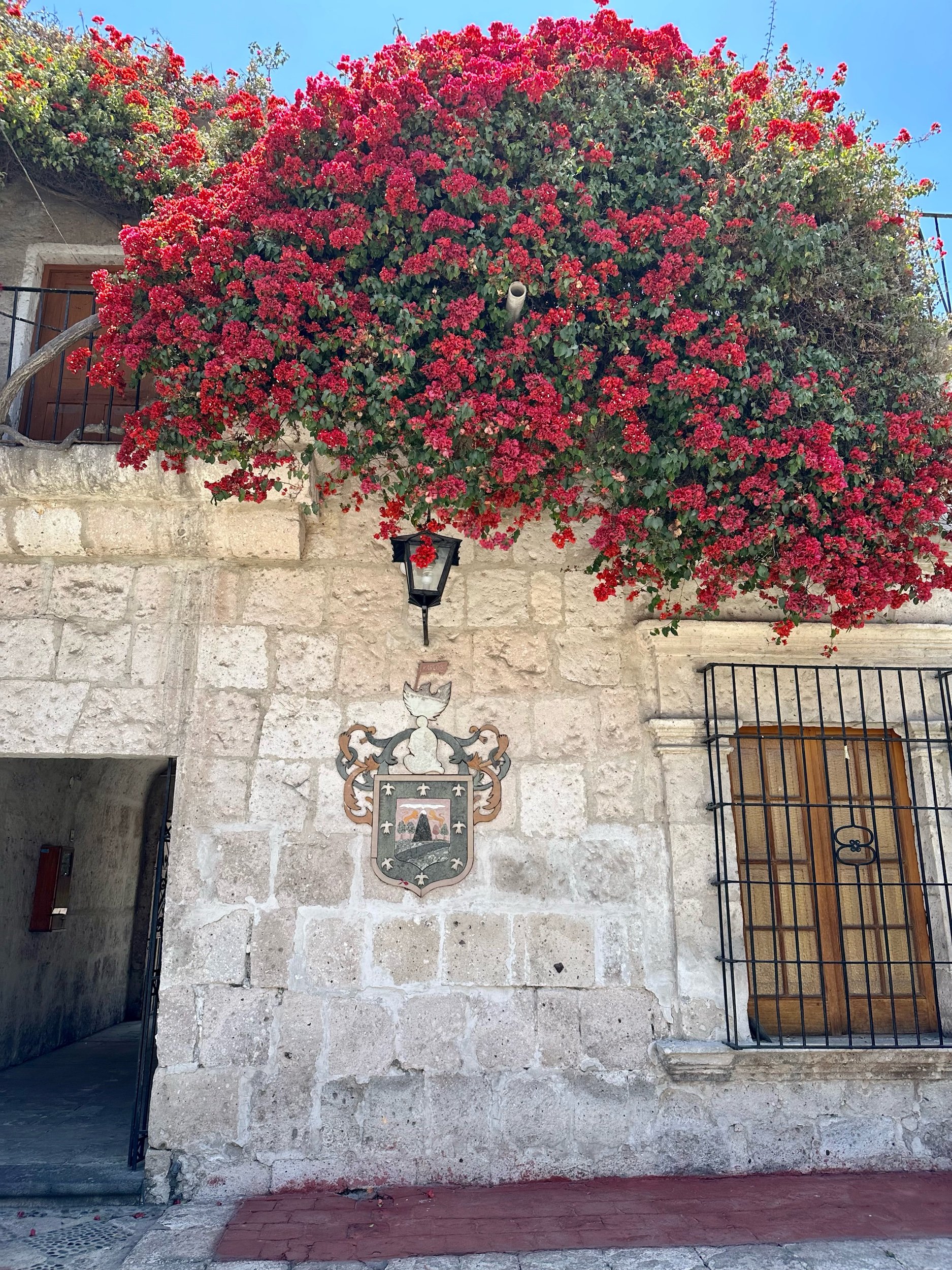
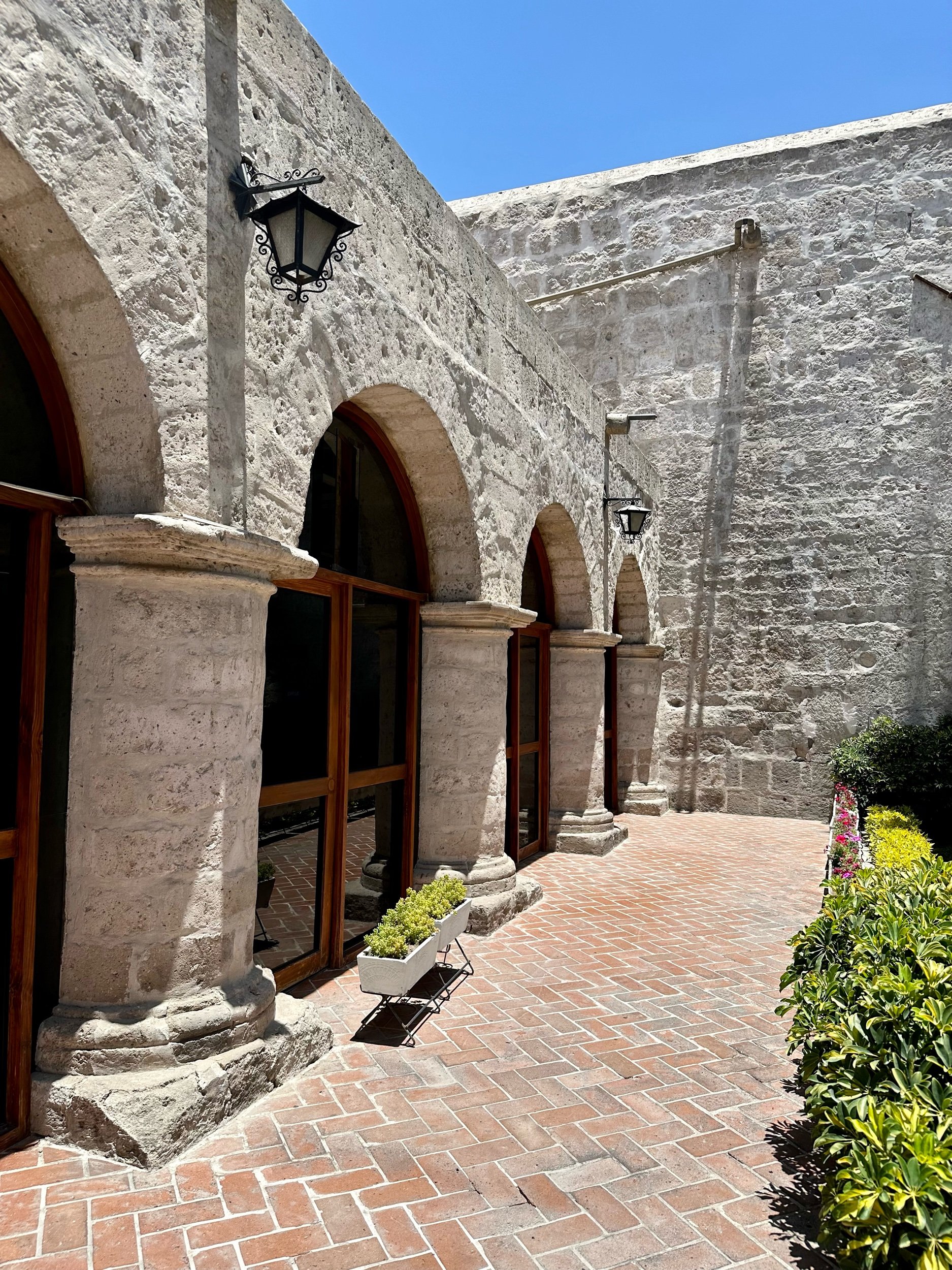
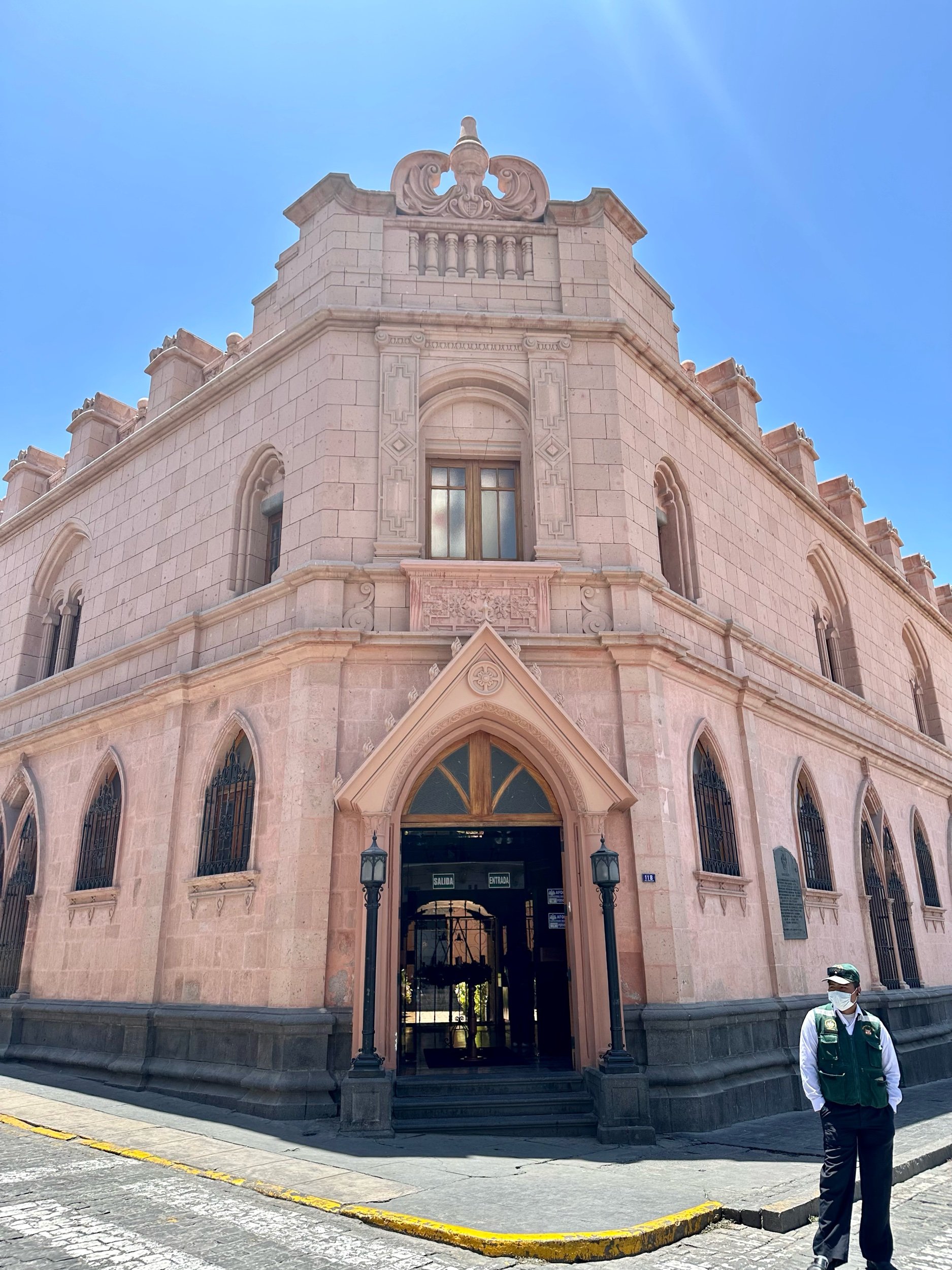
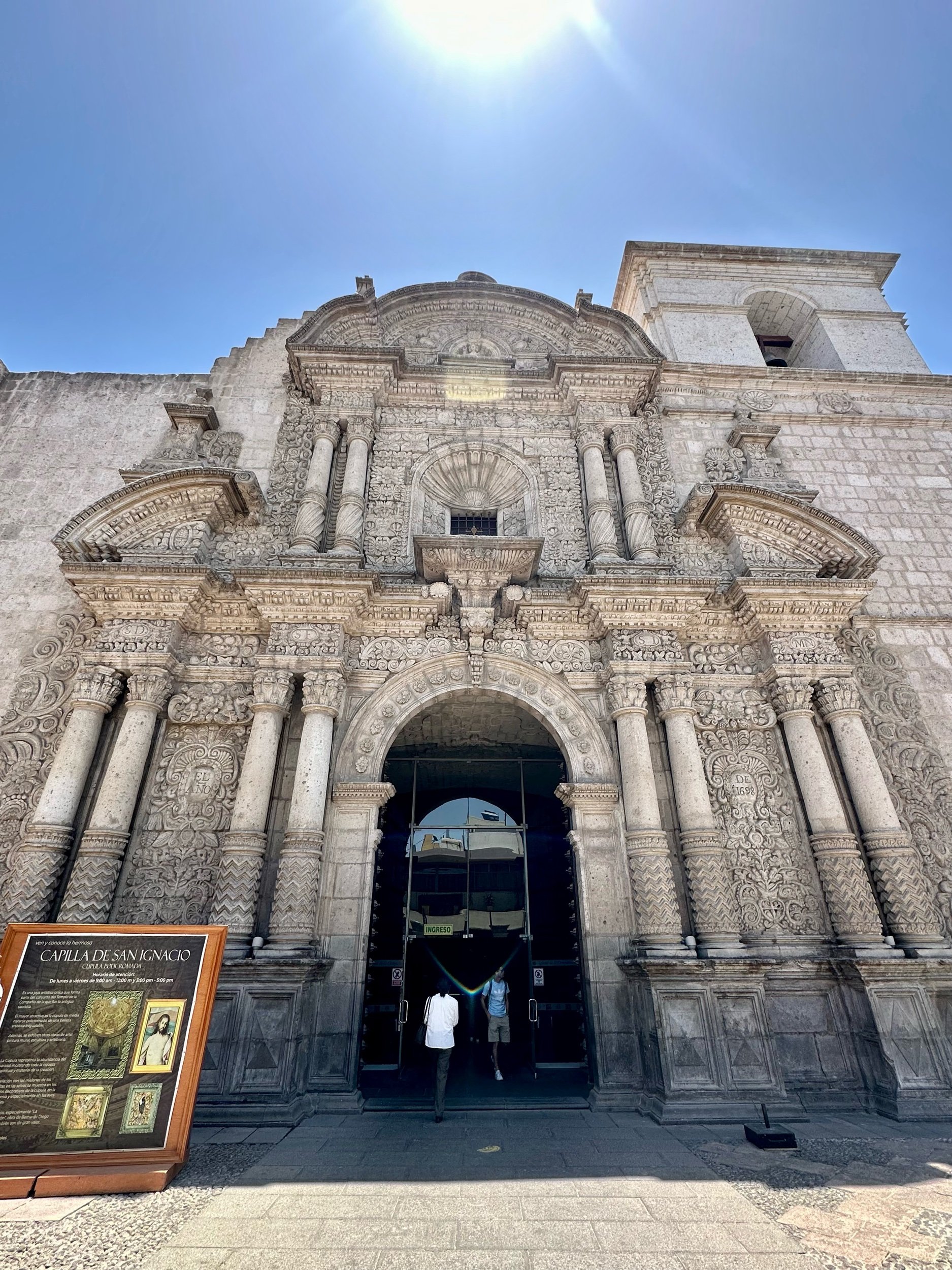
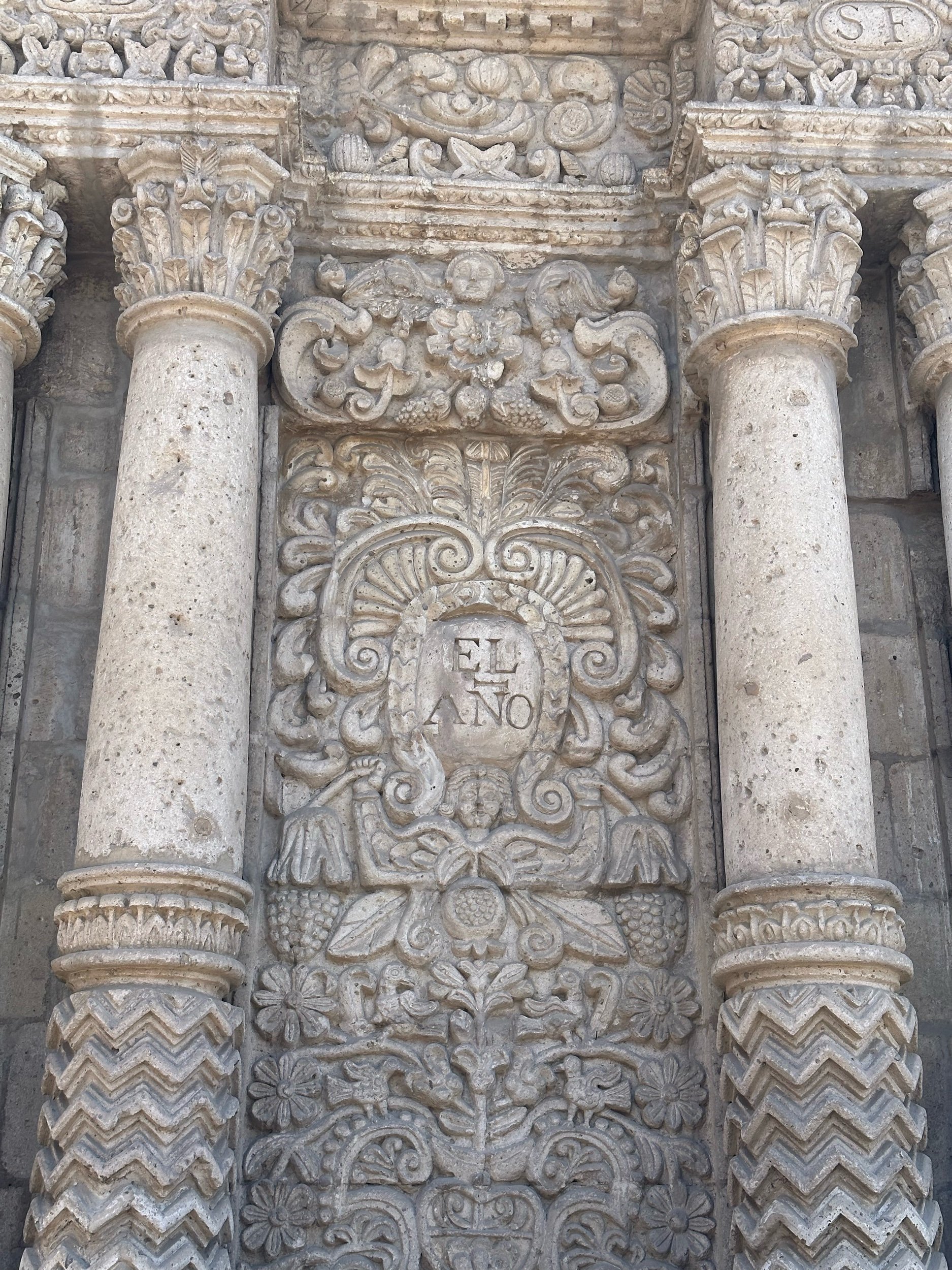
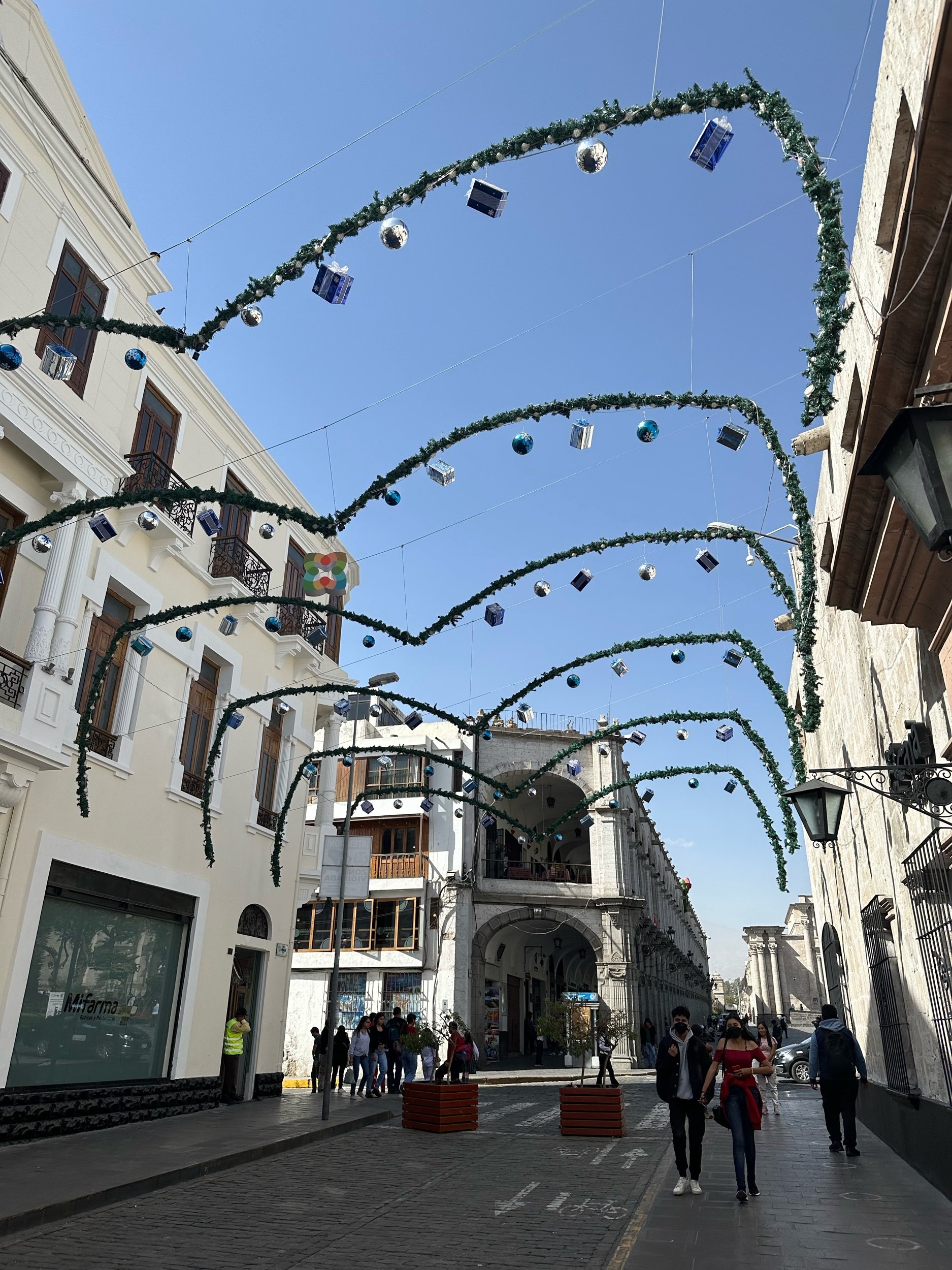
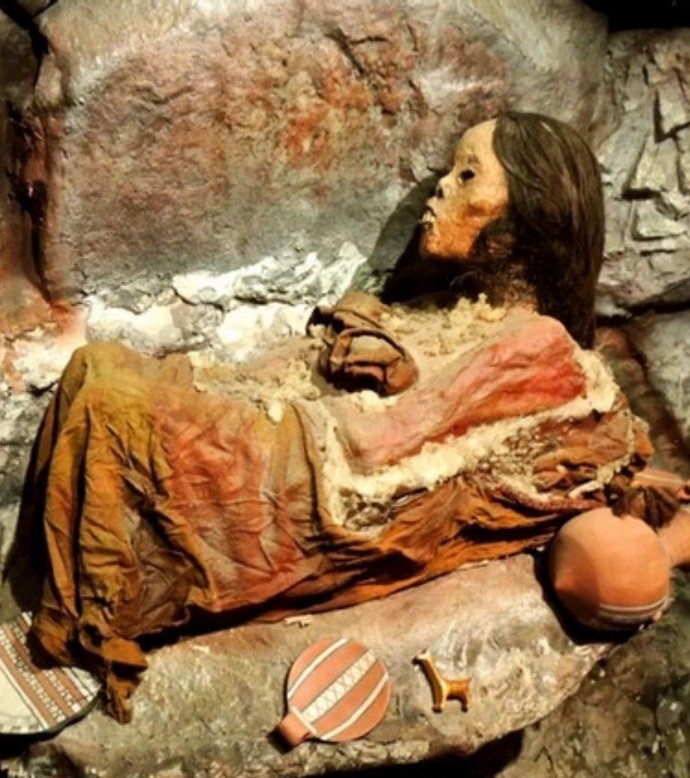
We started our last day with lunch at Picanteria La Nueva Palomino in the Yanahuara neighborhood for lunch. The Picanterias are a style of restaurant that was almost like a communal food hall. You would sit at long tables instead of a table just for your group, they had set meals of the day, and everyone would eat together no matter your class or background. Nowadays, you sit at your own table but the set meal is still in place! We got the Super Picanteria which was a sampler plate of different dishes; Arroz Blanco, estofado de cogote (bean stew with chicken), locro, zarza de cabeza (beef dish), torrejita del dia (veggie pancake), Pastel de Papa (cheesy potato cakes), Rocoto Relleno, some cheese, and a salad. It was so freaking good! Susan also got a Chica de Jora, a local fermented purple-corn drink made for the gods. Back in the day they used to make this drink by fermenting the corn with their own saliva; yes, workers would take some corn, put it in their mouths, and spit it into the urn to ferment for days to make the drink. We don’t think that they still make it this way… The restaurant was also lovely and had a great courtyard to eat in.
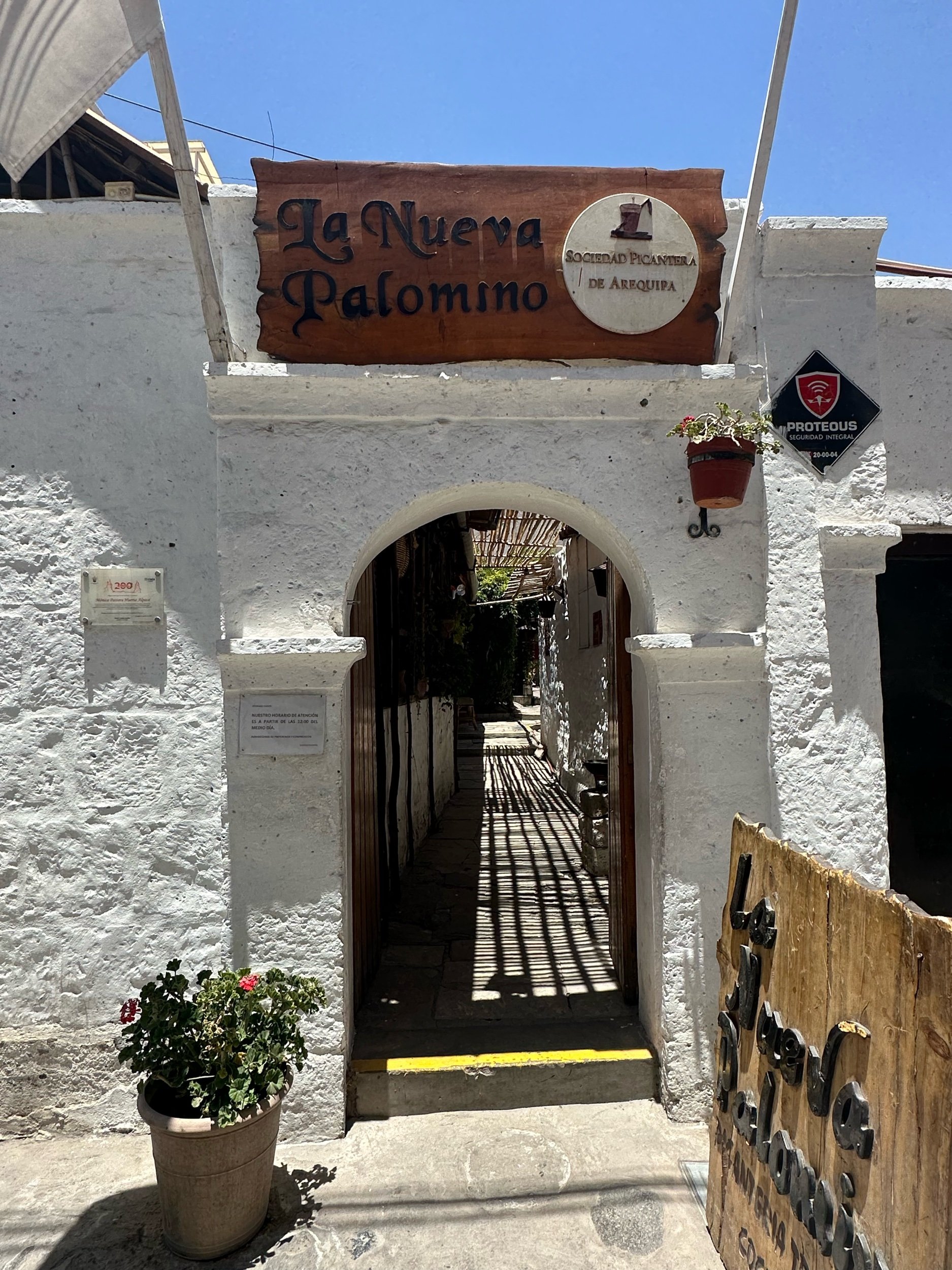
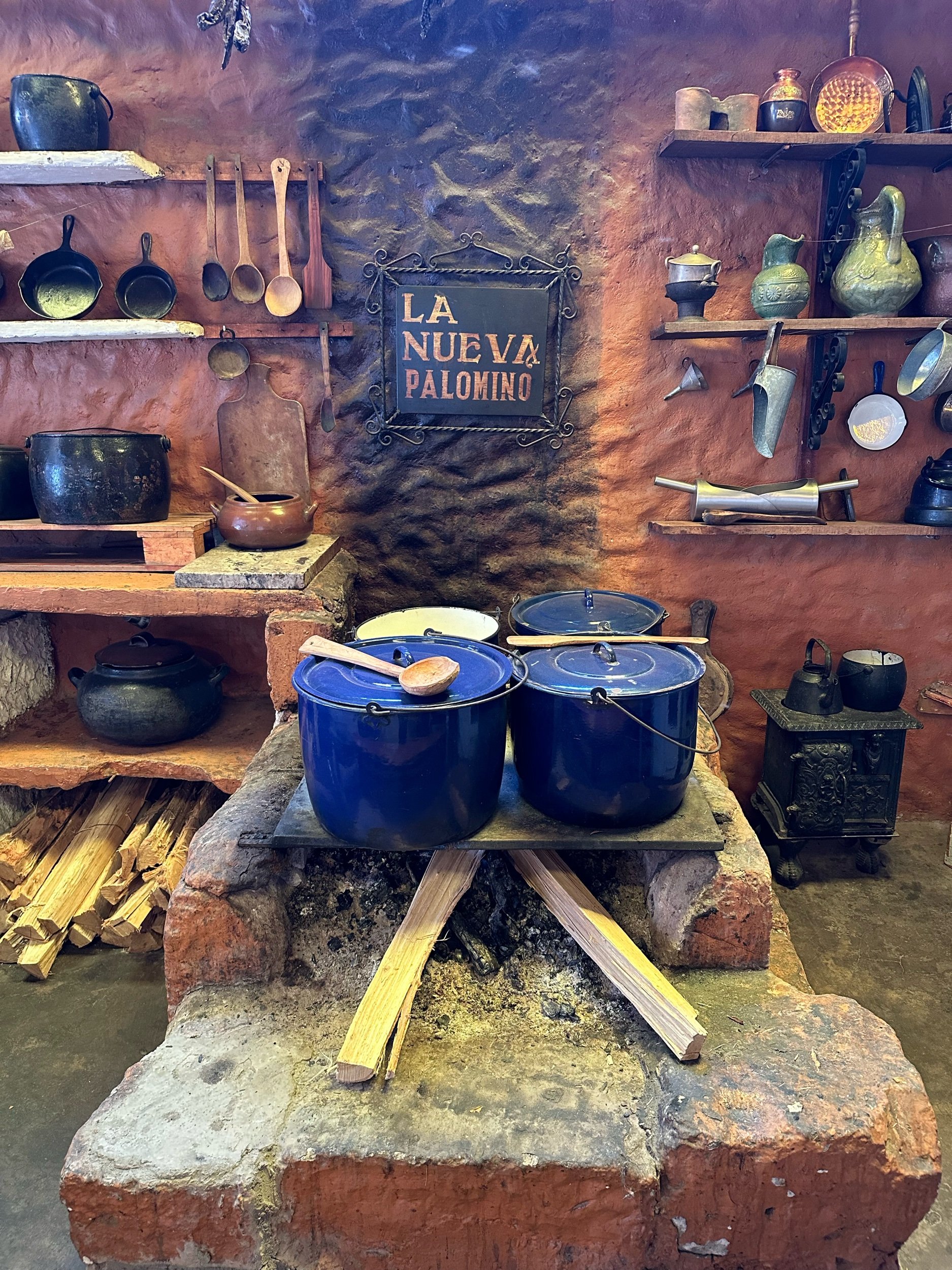

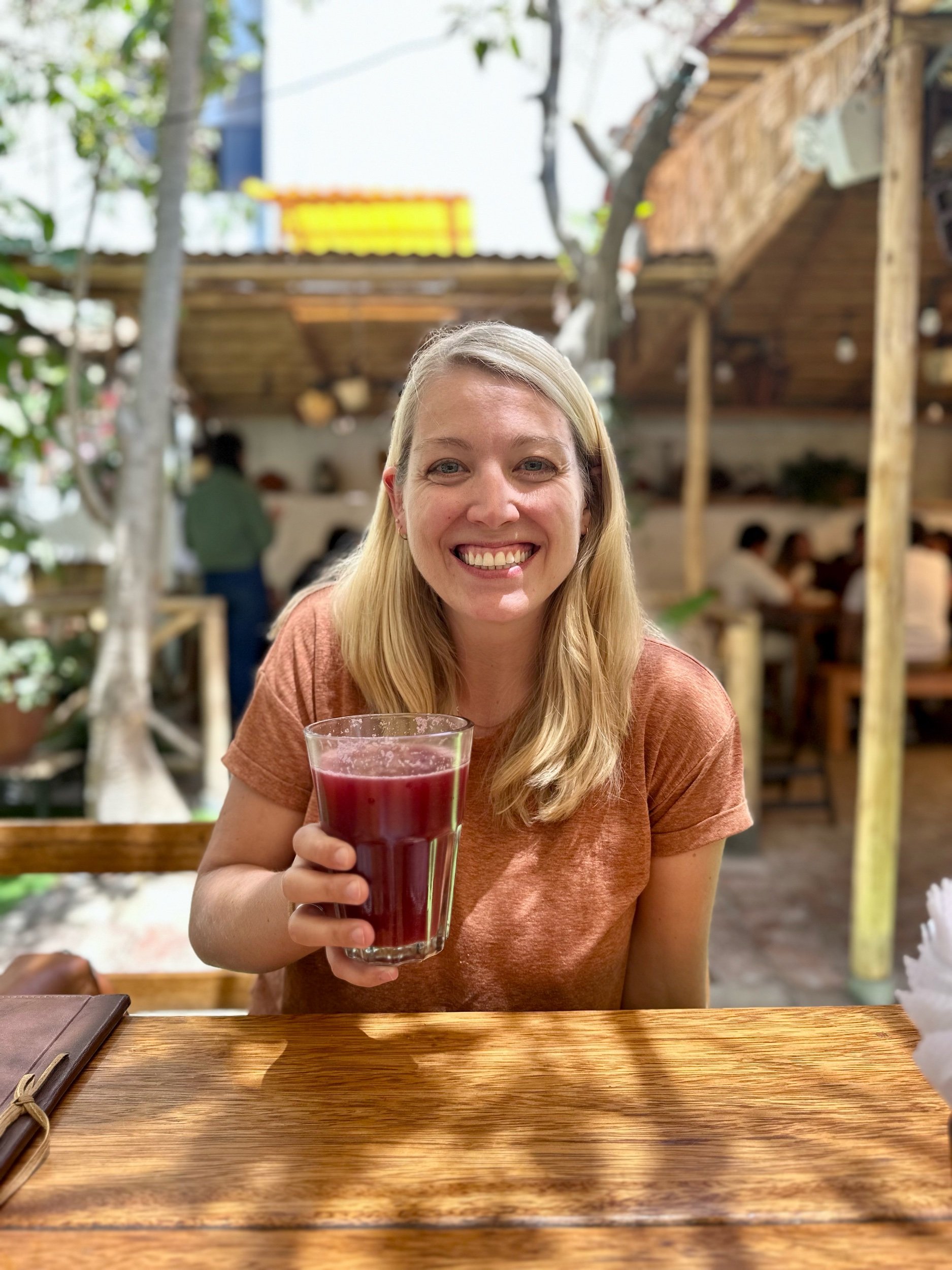

We walked off lunch by heading to the Santa Catalina Monastery, a “nunery” where nuns have lived since the 1500’s. It was a beautiful complex that had small walking streets and apartments that the nuns lived in. The apartments had large stone walls and most had stairways and openings up to the roof to provide ventilation and airflow for cooling during the day. There were courtyards and chapels that they used for service and the walls were painted deep shades of red, orange, and blue.
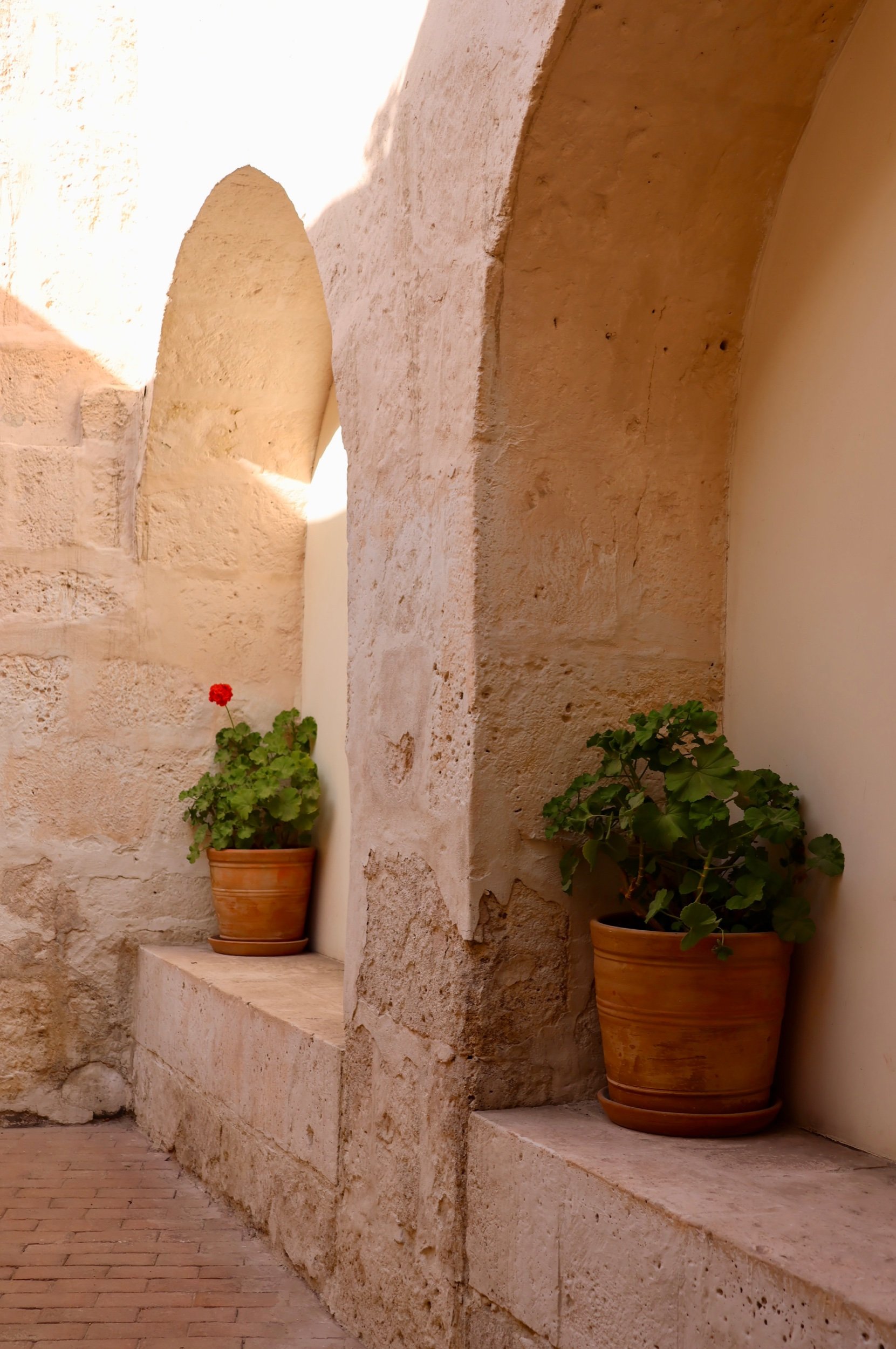
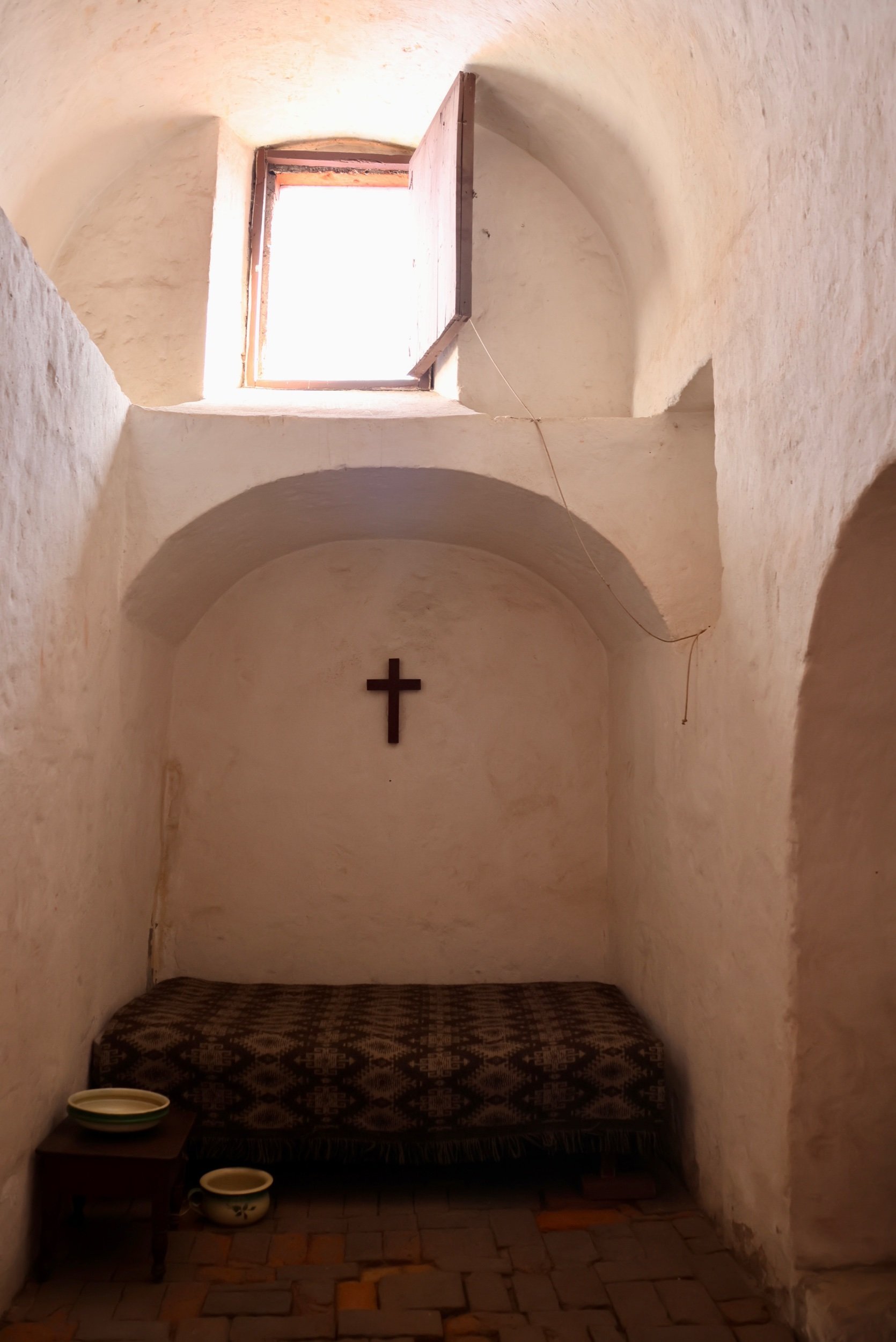
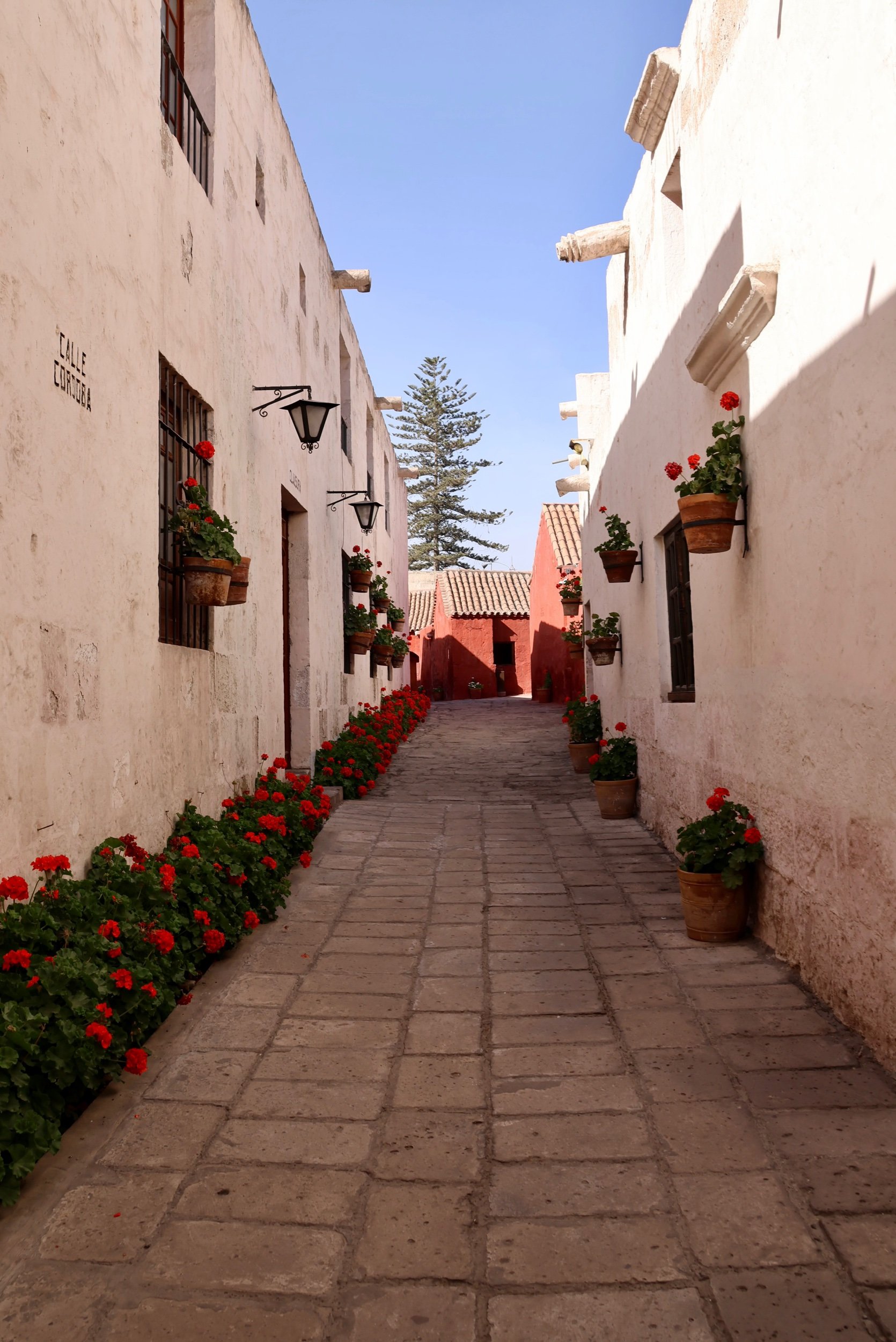
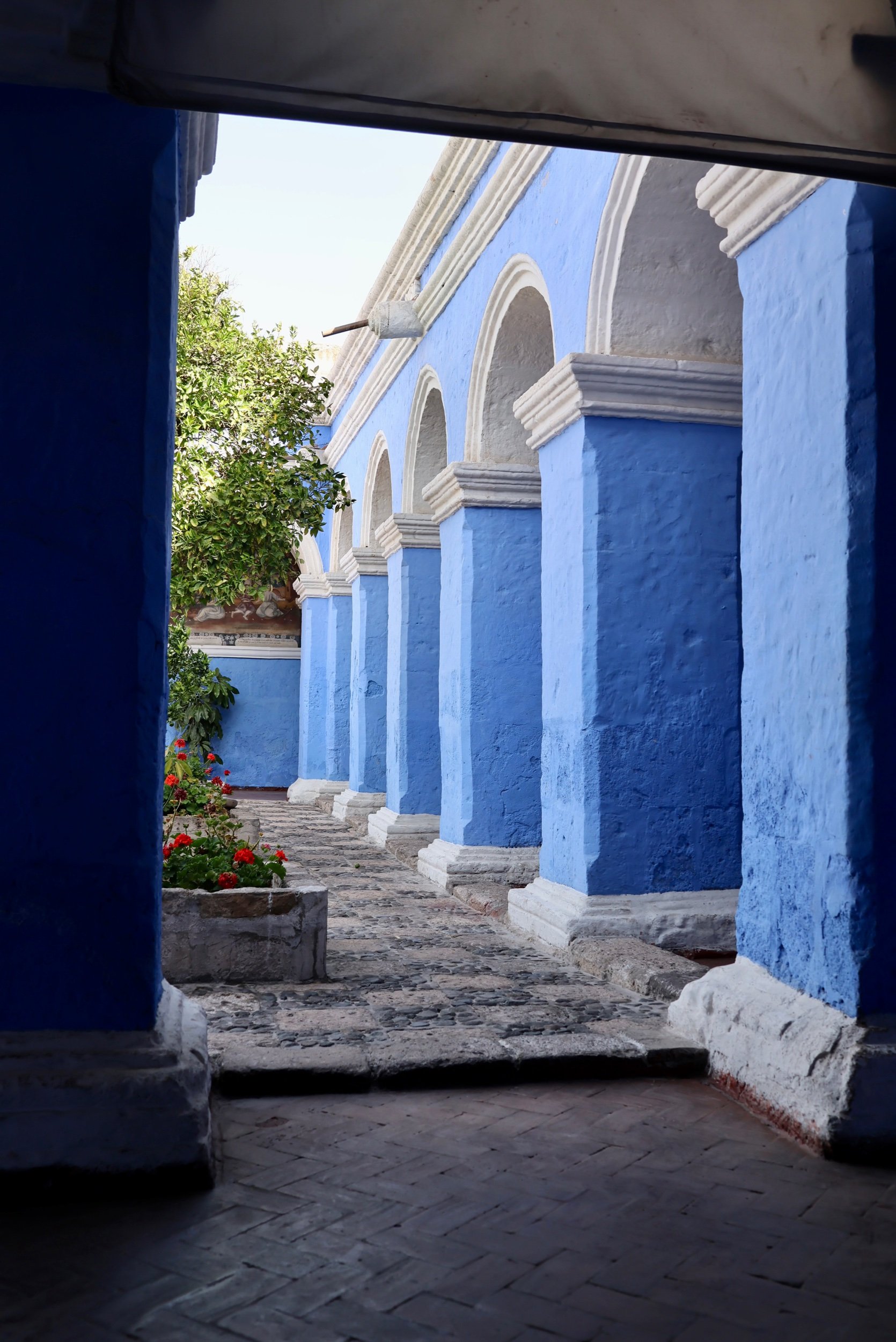
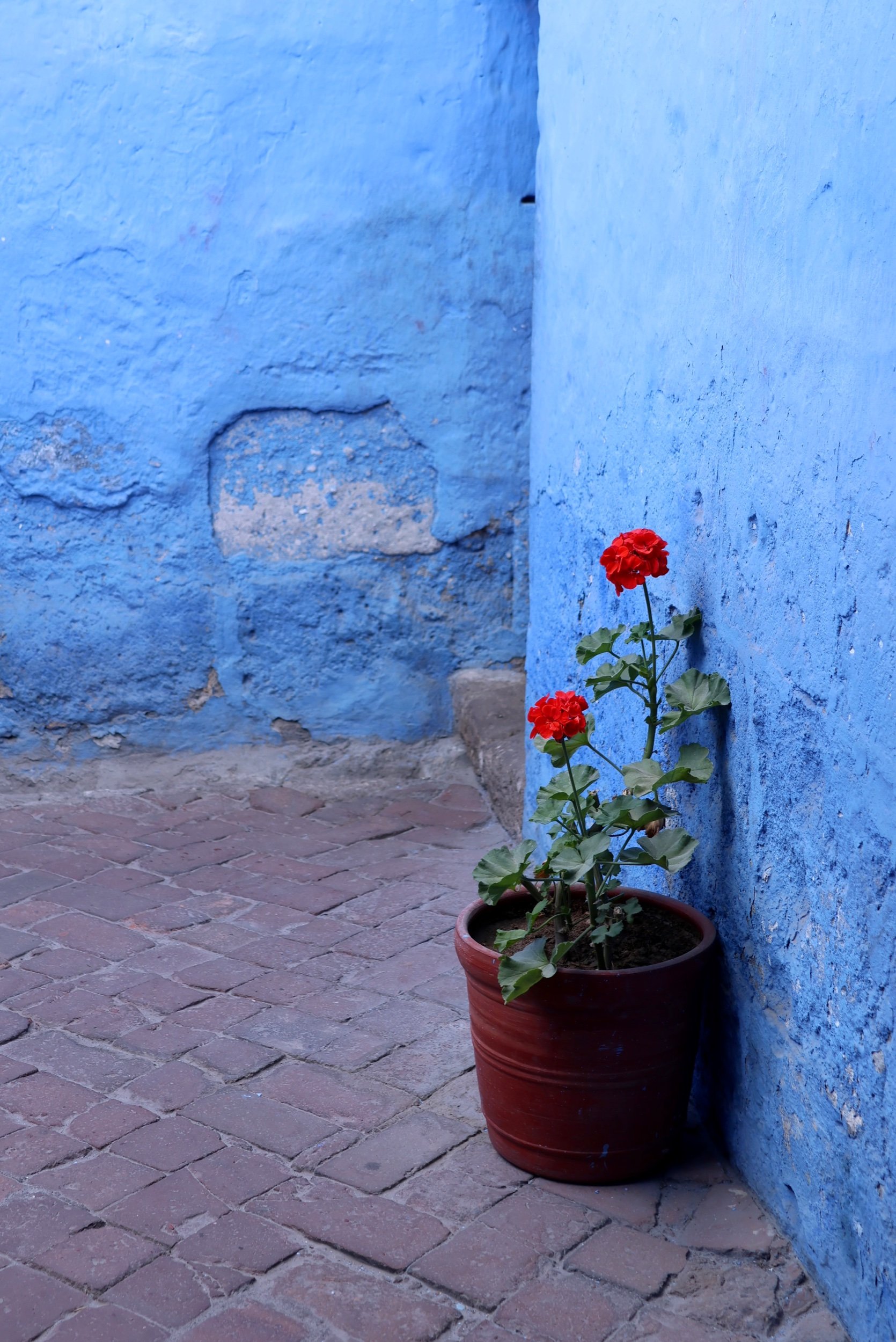
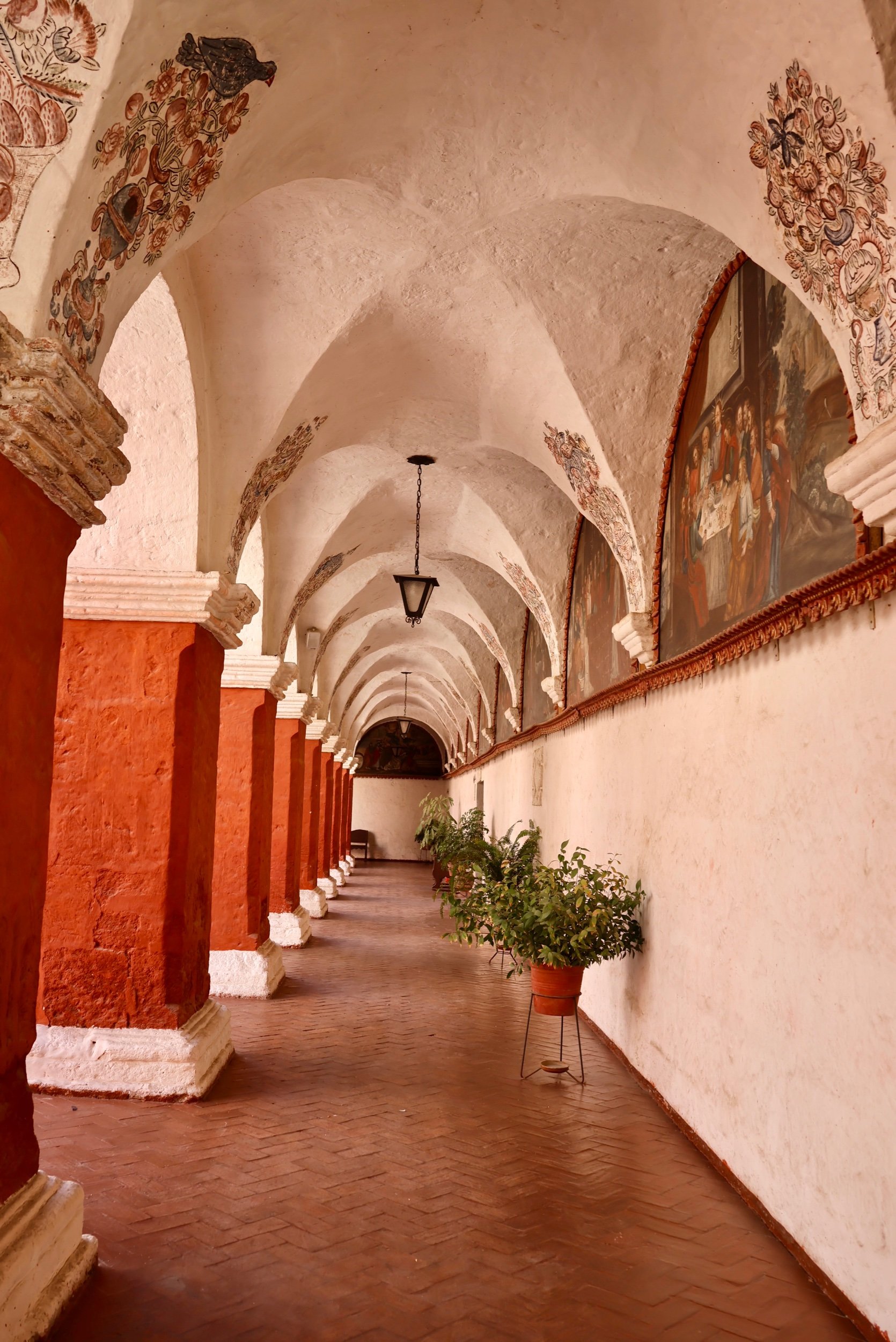
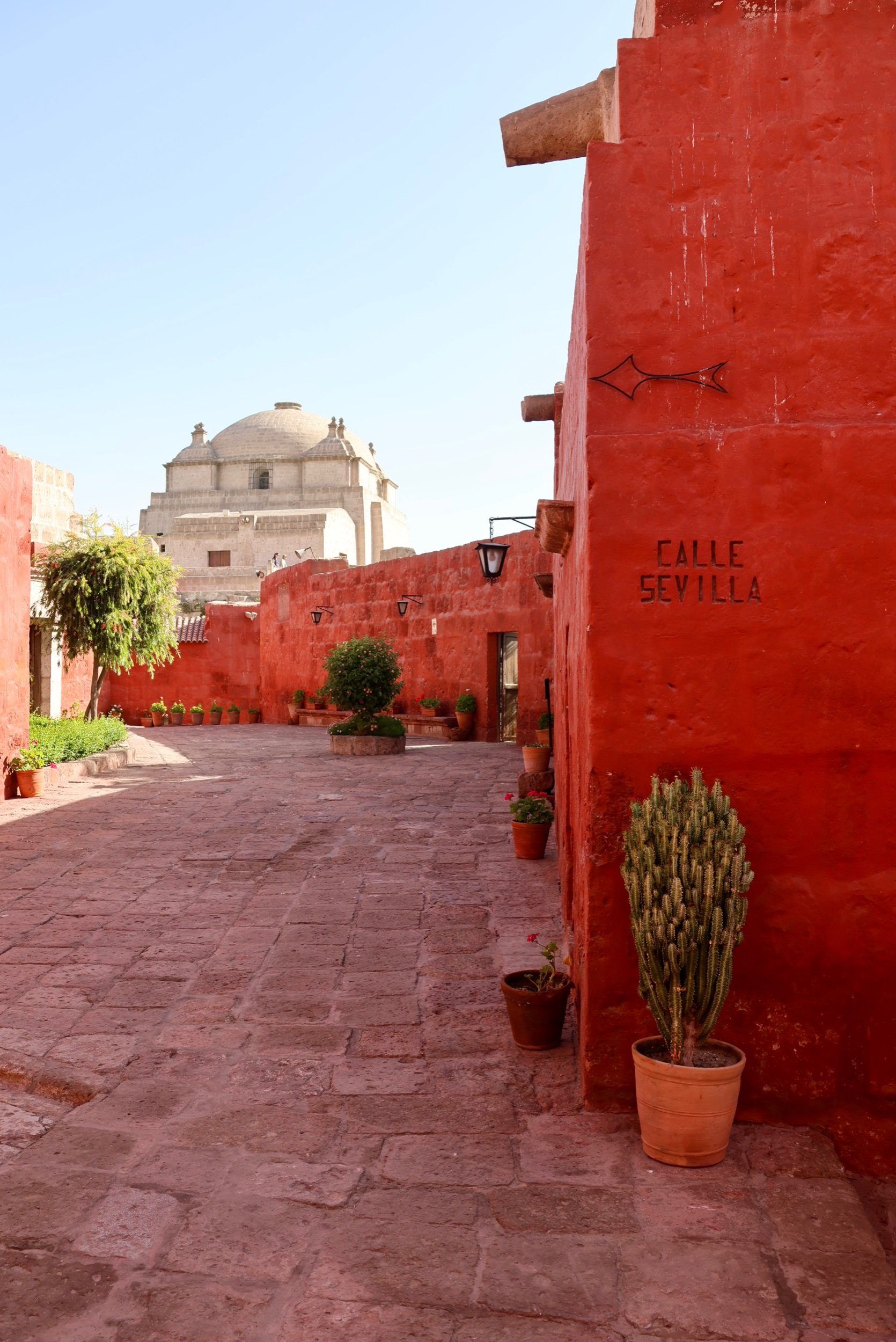
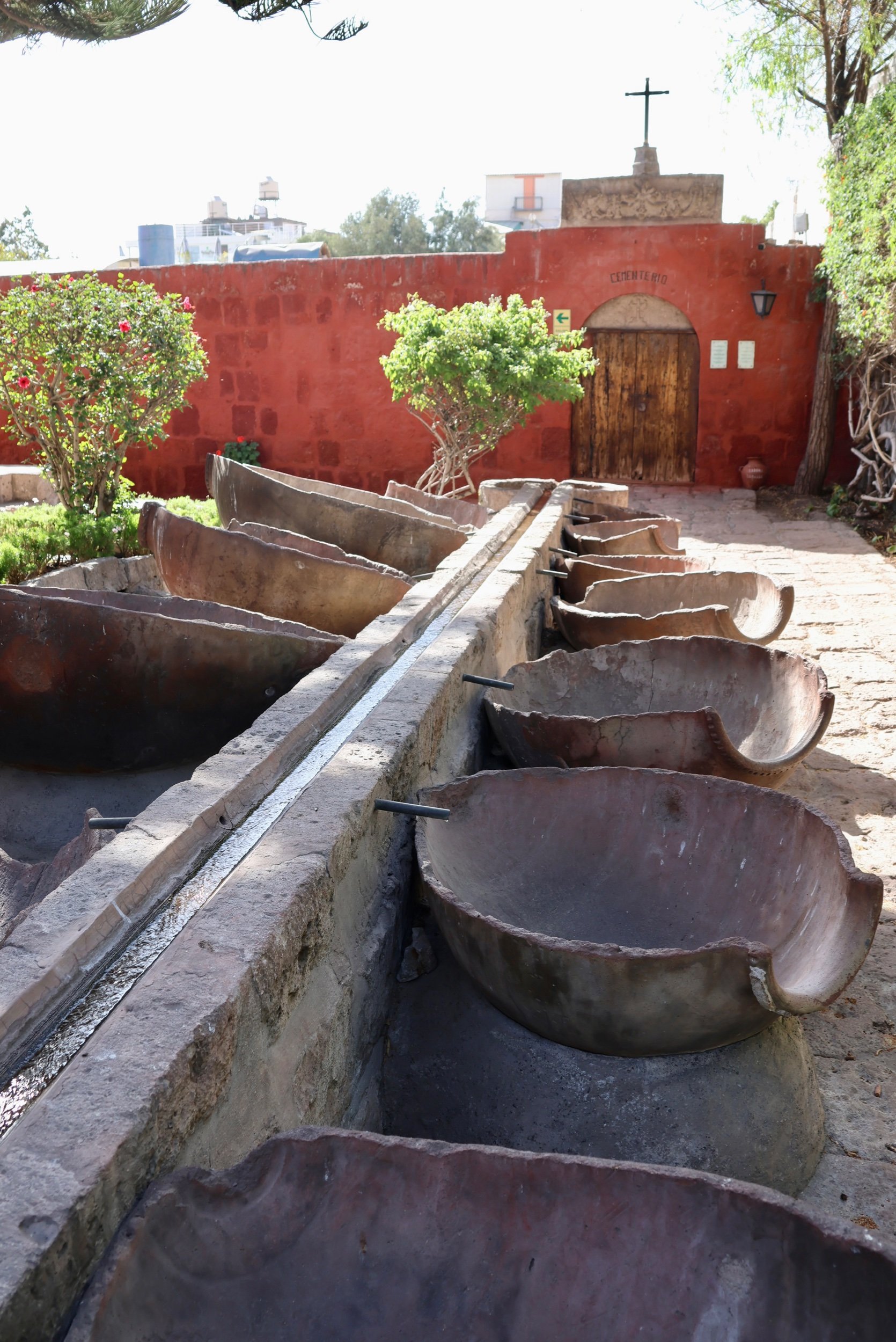
We then walked across the river to the Monasterio y Museo de la Recoleta where monks had lived since the 1500’s. The monks maintained a library with over 10,000 books, some dating back to the 1640s. It was a smaller complex but did have a beautiful church attached to it.
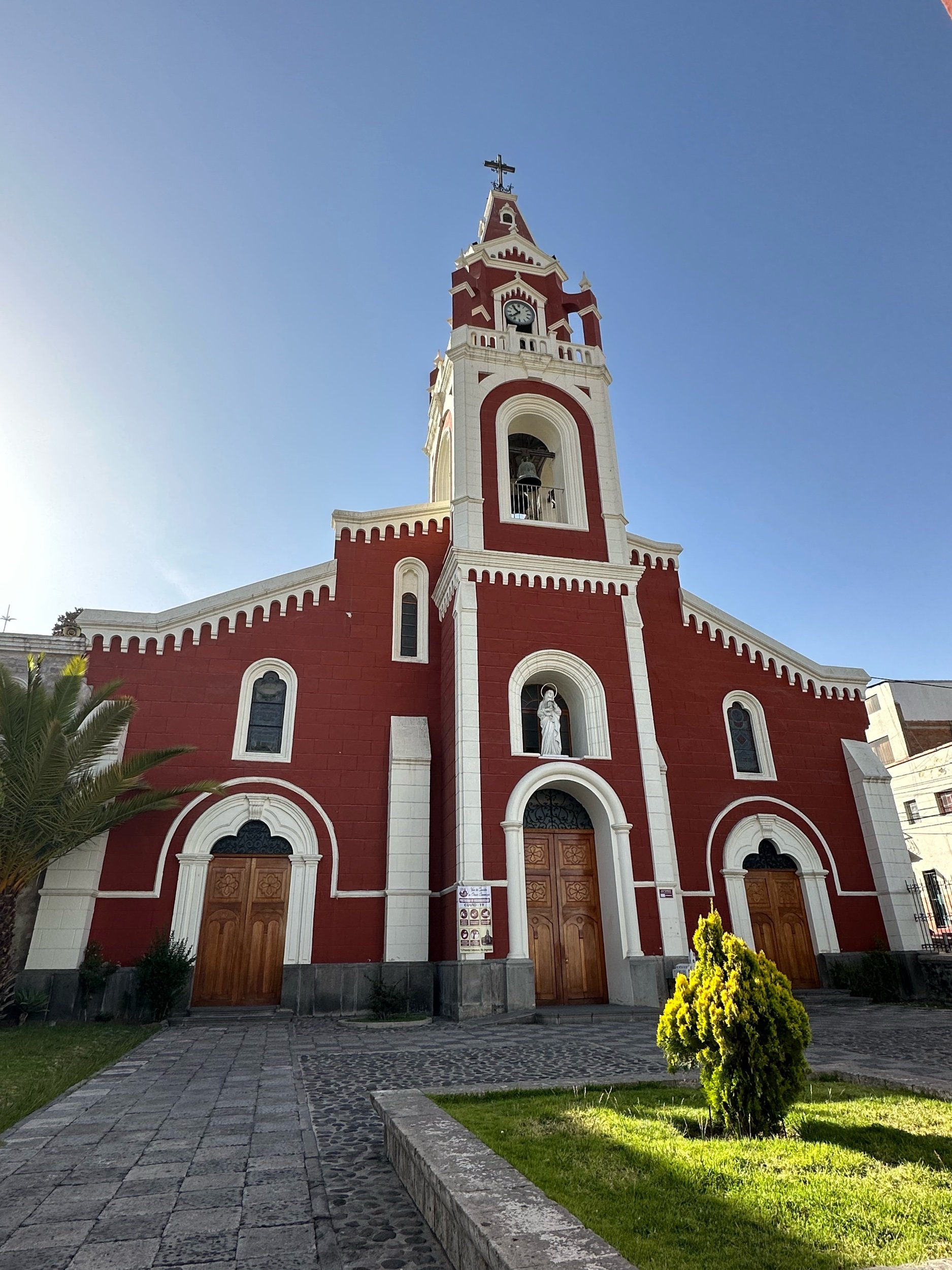
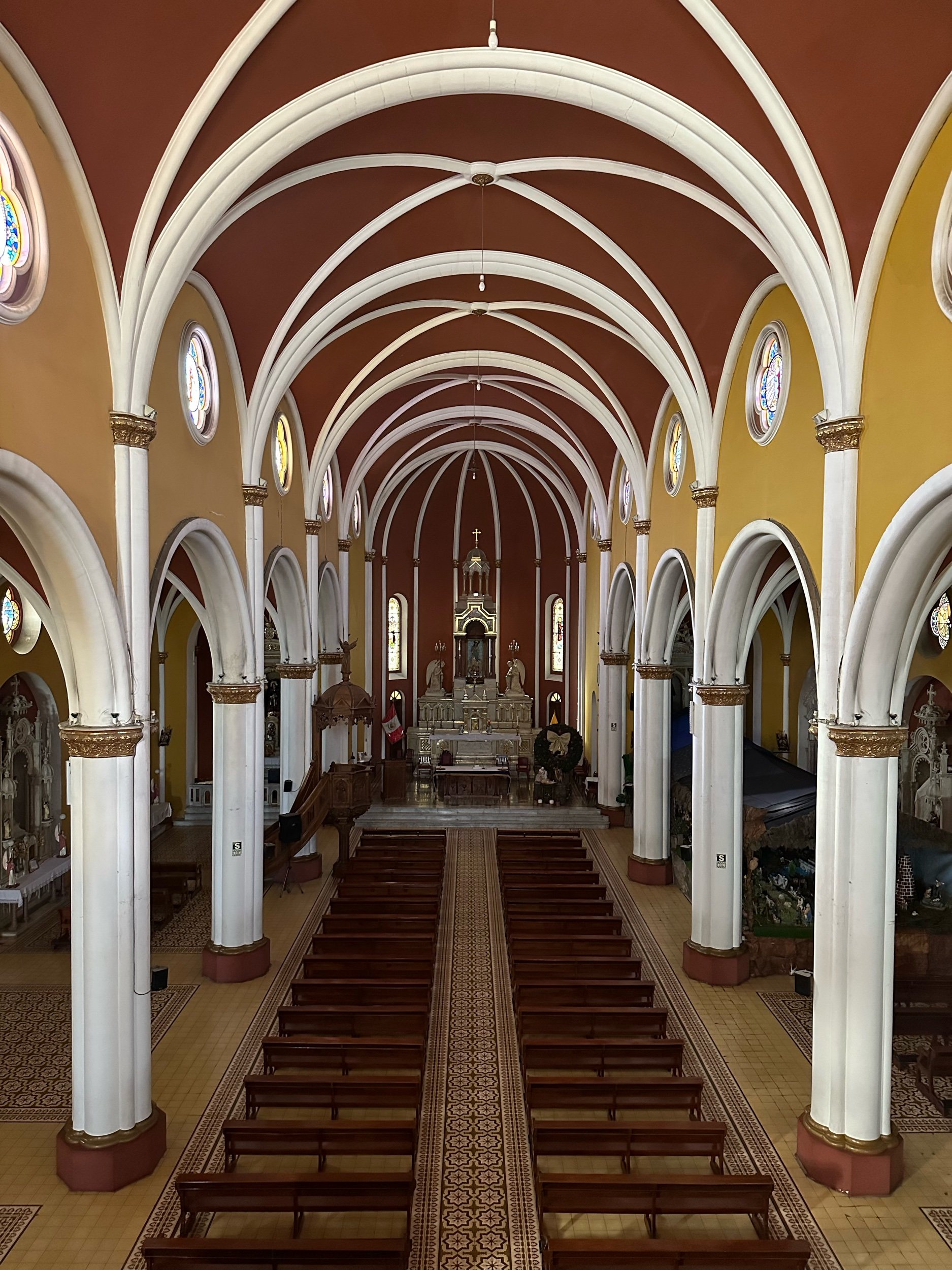
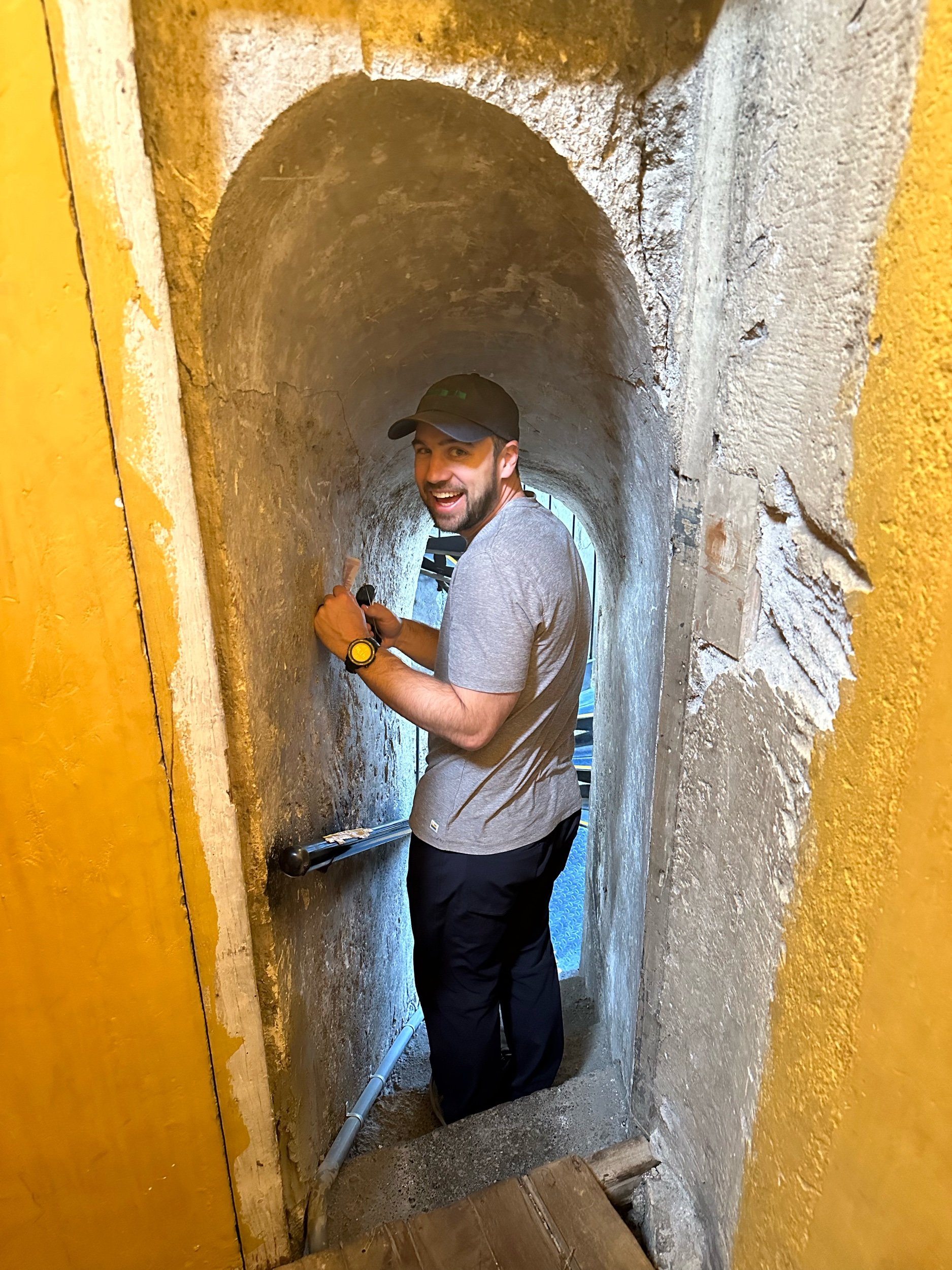
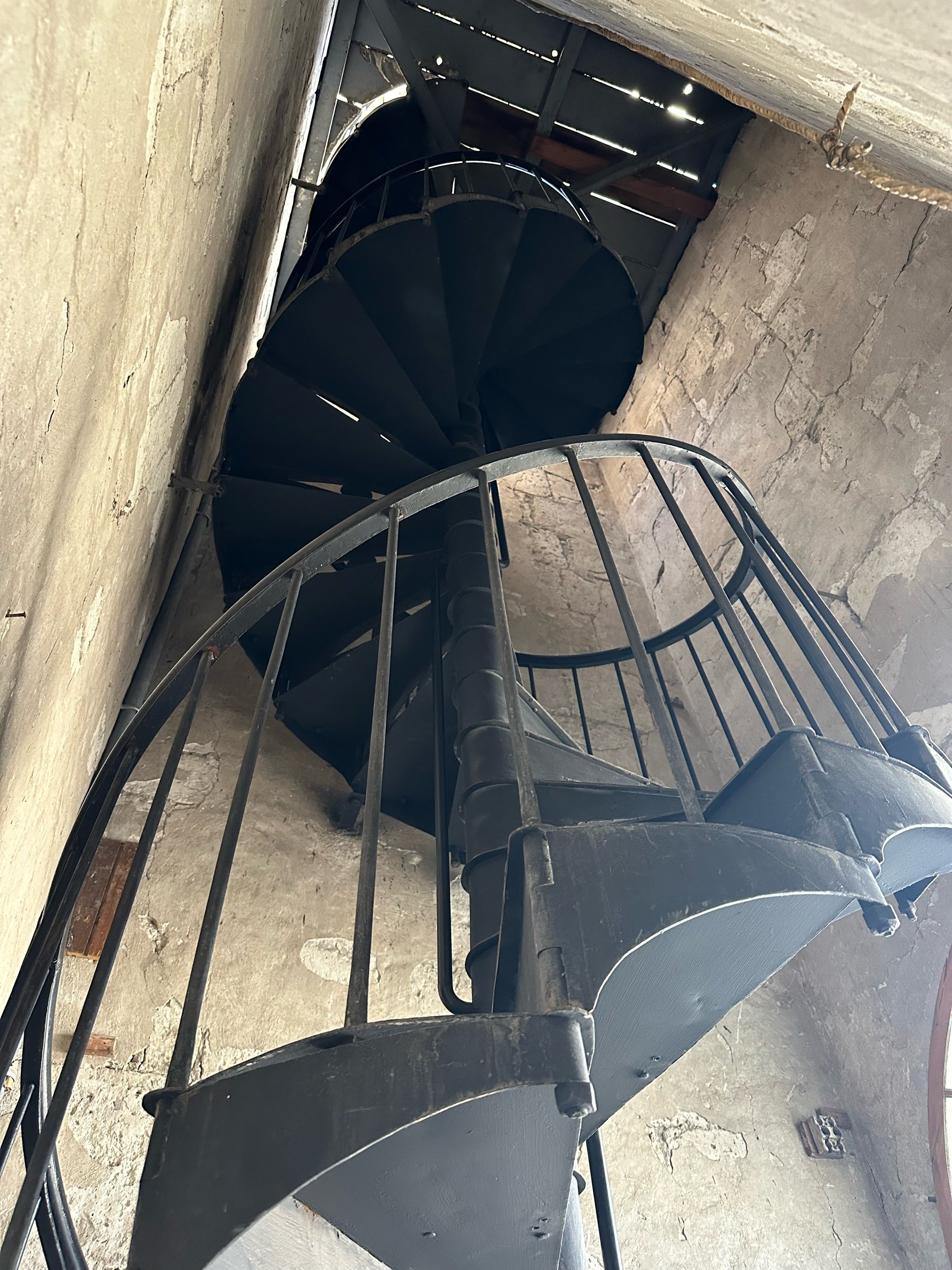
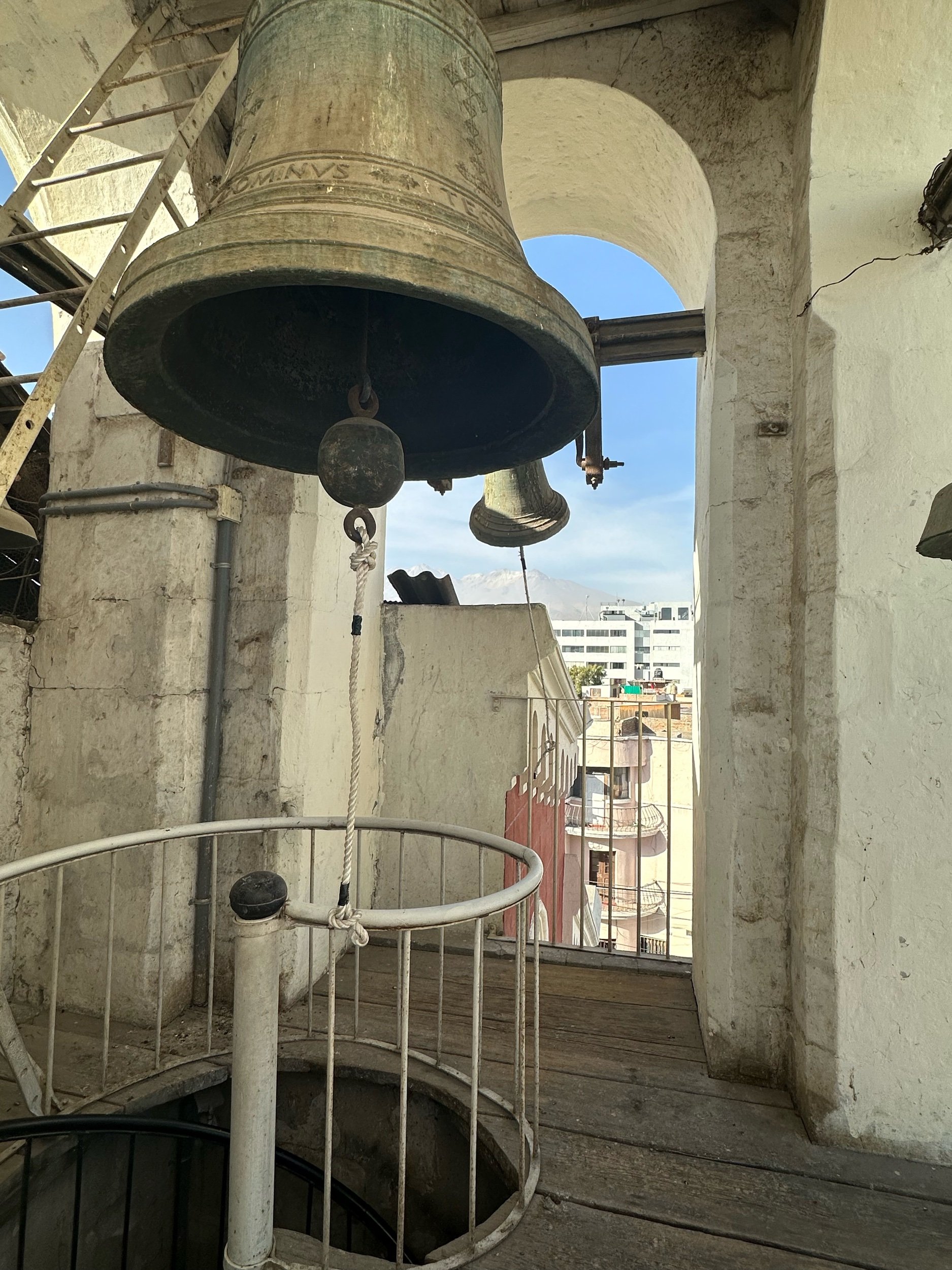
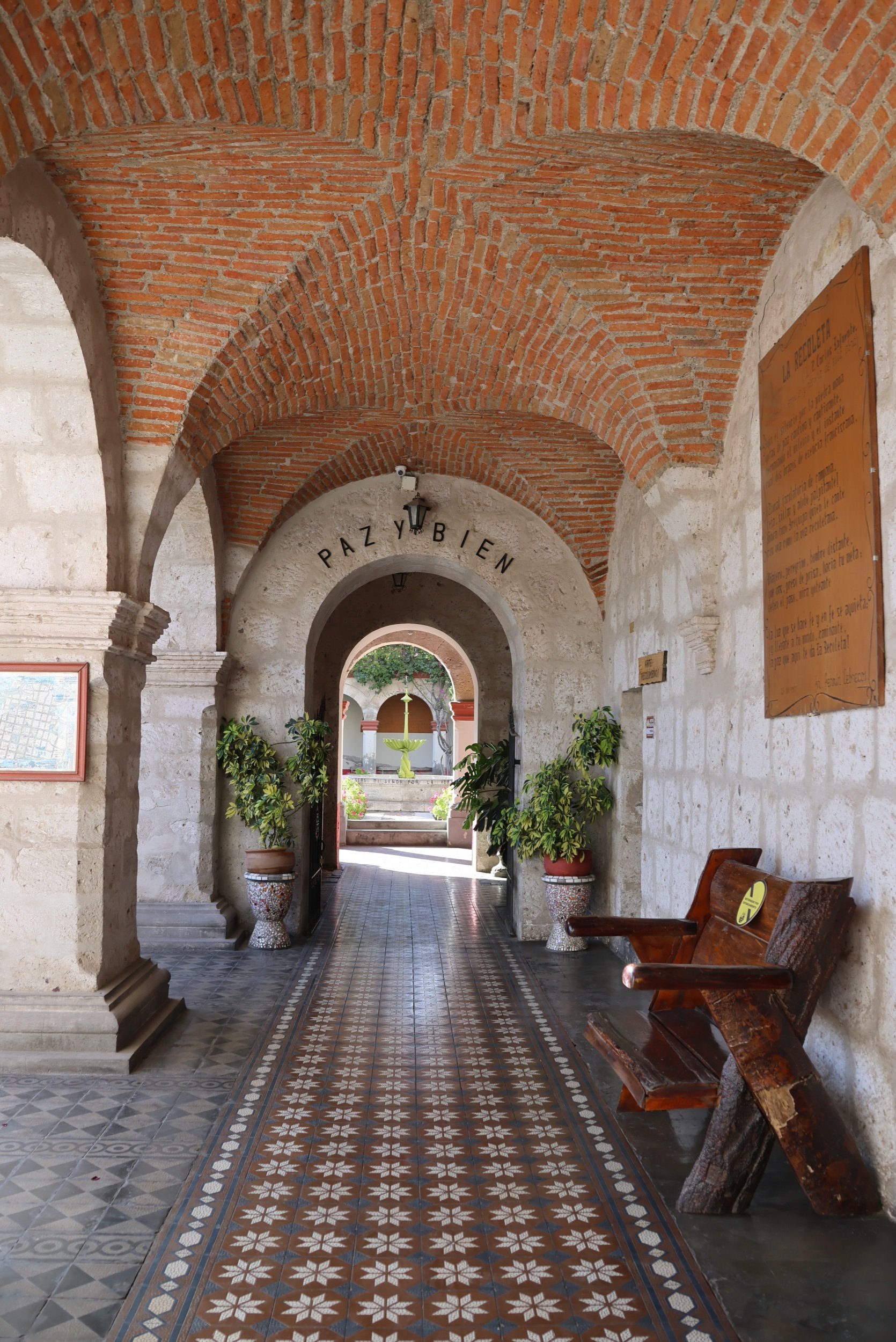

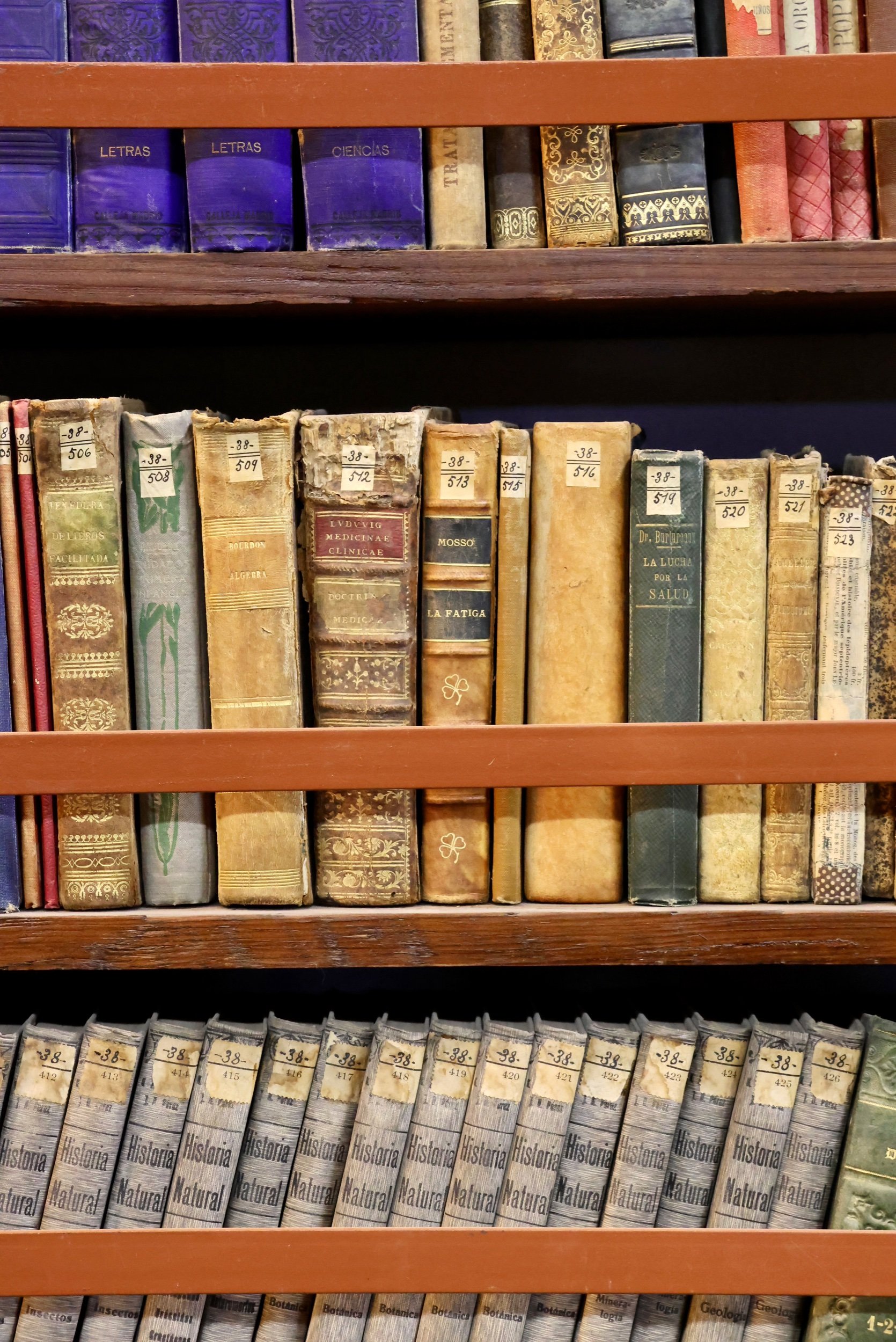
We finished the day at the Yanahuara viewpoint where we could see El Misti, the towering volcano at the edge of the city, at sunset. We did stop first for some delicious Picarones at Bunuelos La Goyita on the park square, yuummm.
We really enjoyed our relaxing week in Arequipa. We can’t wait to visit again to try some more local food and beer. Maybe next time we will have enough energy to enjoy the adventure of Colca Canyon, but we would be happy with another siesta-filled week any time.
